The TCL C6K is a television for those who want to combine gaming and watching movies with good contrast, without spending a fortune. Thanks to the VA panel with Mini-LED backlighting, blacks are deep and contrast is high, so evening screenings look truly spectacular. Additionally, it offers decent brightness, which, combined with Dolby Vision, makes movies take on a cinematic character. The fluidity of the image is also significant – the 144Hz refresh rate does wonders for sports and dynamic games, and gamers get a full package of extras: VRR, ALLM, HDMI 2.1, HGiG, and even a 240 Hz mode in PC. On a daily basis, the television is powered by Google TV, which offers a ton of apps and the Gemini AI voice assistant, making operation convenient and flexible. It's also worth mentioning the sound – support for Dolby Atmos and DTS gives the impression that the equipment is ready not just for gaming. As is often the case, there are a few things that could be improved. The backlighting in difficult scenes can lose details or wash out blacks, and Polish translations in the menu can be so clumsy that one has to wonder what they actually mean. Despite this, the overall performance holds up very well, and given the price, the TCL C6K could be one of the more interesting choices for someone looking for a versatile television for movies, sports, and games. Especially when a good promotion comes along – and when TCL traditionally polishes up the details in updates.
- Matching (Score)
- Our verdict
- TV appearance
- Where to buy
- Contrast and black detail
- HDR effect quality
- Factory color reproduction
- Color reproduction after calibration
- Smoothness of tonal transitions
- Image scaling and smoothness of tonal transitions
- Blur and motion smoothness
- Console compatibility and gaming features
- Input lag
- Compatibility with PC
- Viewing angles
- TV efficiency during daytime
- Details about the matrix
- TV features
- Apps
- Playing files from USB
- Sound
TCL C6K vs LG OLED B5
Direct compare
Check the best price offer:
LG OLED B5C6K / C69K / Q6C
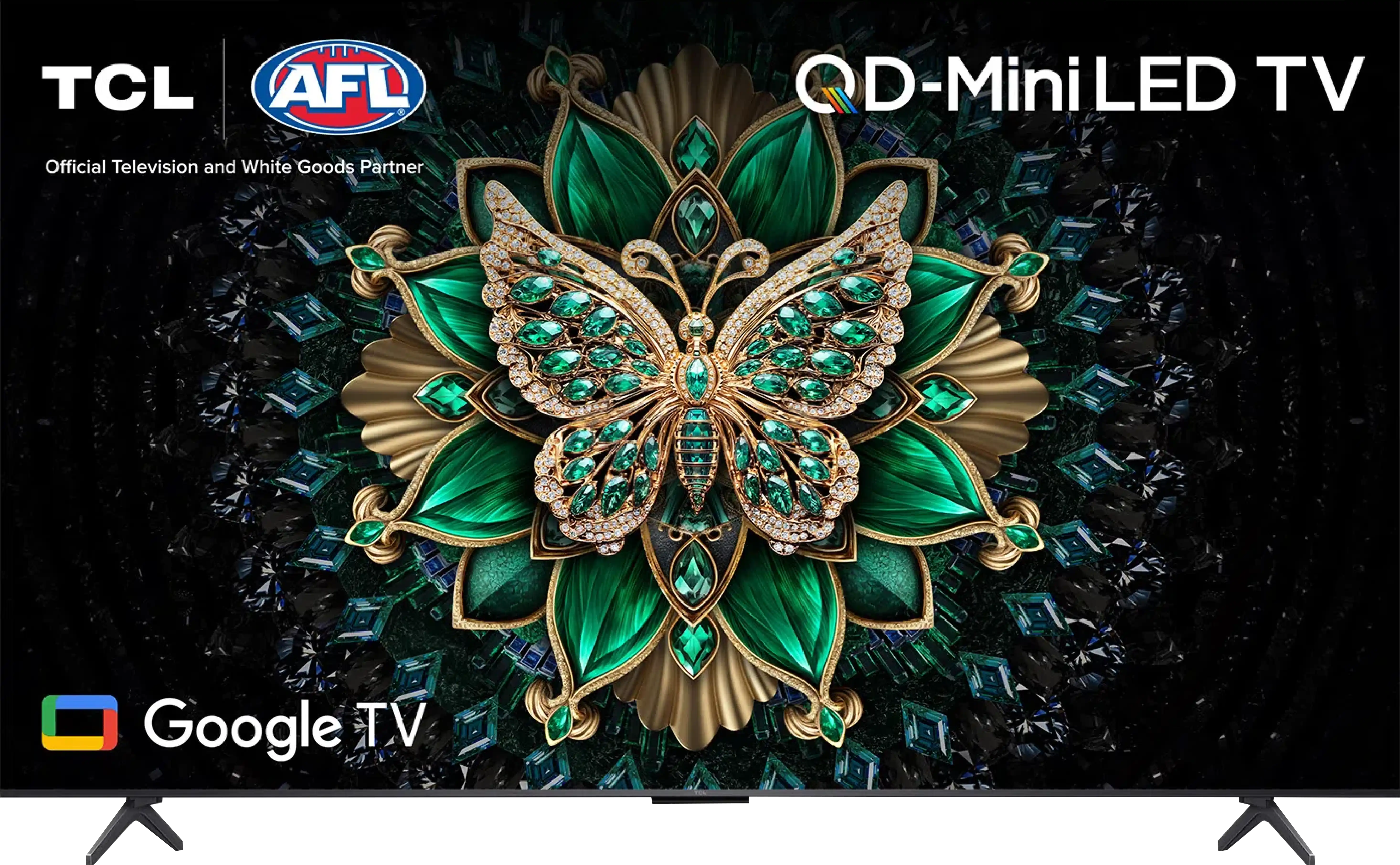
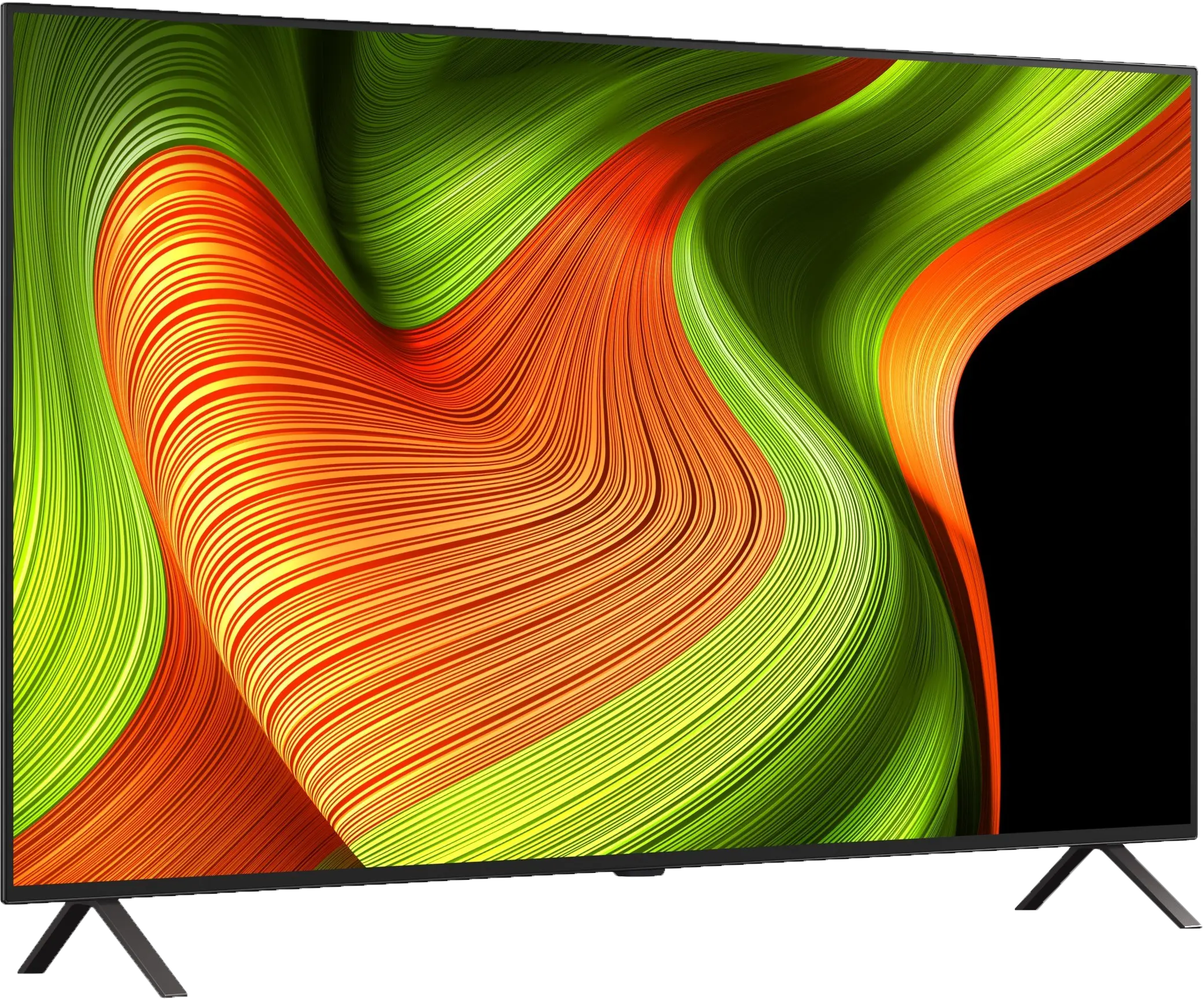
Panel type: LCD VA
Resolution: 3840x2160
System: Google TV
Model year: 2025
Complete the survey to find out the result

Panel type: WRGB OLED
Resolution: 3840x2160
System: WebOS
Model year: 2025
Complete the survey to find out the result

Overall rating
7.1
7.8
Movies and series in UHD quality
6.7
7.9
Classic TV, YouTube
6.6
8.6
Sports broadcasts (TV and apps)
6.3
8.5
Gaming on console
8.4
9.2
TV as a computer monitor
8.6
7.6
Watching in bright light
6.4
4.9
Utility functions
7.0
7.9
Apps
9.6
9.1
Sound quality
6.5
7.0
Complete the survey to find out what fits your preferences
Advantages
Very good contrast and black level: VA panel and MINI-LED backlighting
Good motion fluidity: High refresh rate of 144Hz
Decent panel brightness
Many features for gamers: VRR, ALLM, HDMI 2.1, HGiG
Additional mode for PC gamers: 240Hz
Google TV system with a wide selection of apps
Support for multiple HDR formats including Dolby Vision
Support for Dolby Atmos and DTS
Very attractive price
Perfect black and contrast
Pleasant picture in HDR format
Outstanding color reproduction capabilities
120Hz OLED panel - excellent motion fluidity
4 HDMI 2.1 ports and full support for gamers (VRR, ALLM, Dolby Vision Gaming, HGiG)
Very low input lag
Correct content scaling and good digital processing
User-friendly webOS system with Magic remote
Built-in USB recording function from built-in DVB-T/T2 tuners
Disadvantages
Managing the backlighting could be better
Language errors in the system
Average brightness and poor performance in bright rooms
No support for DTS formats
Different versions of the remote in derivative models – it's hard to predict which version we will get
Our verdict
LG B5 is truly a great OLED television that shows you don't need to spend a fortune for very good quality. It offers deep blacks typical of organic panels, excellent color reproduction—especially after calibration—and enjoyable HDR movie watching experiences. All of this makes evening viewings capable of delivering cinematic emotions without reaching for significantly more expensive screens. The fluidity of the picture and the set of features for gamers also deserve recognition. A 120 Hz panel, low input lag, full support for HDMI 2.1, variable refresh rates, and Dolby Vision Gaming mode make the B5 a very versatile screen—for both gaming and watching sports. It is complemented by a user-friendly webOS system with a Magic remote that provides convenient access to content and simplifies operation. However, not everything is perfect. Compared to the B4 model, there is a noticeable slight drop in brightness, especially in very bright rooms. For some users, the lack of DTS audio support may also pose a problem, which could necessitate workarounds when connecting Blu-ray players. Despite this, LG B5 remains one of the most sensible choices for those looking to enter the world of true cinema—without overpaying but also without significant compromises. It’s a screen that doesn't need to prove anything—it simply delights the eye with great picture quality and works as it should.
TV appearance
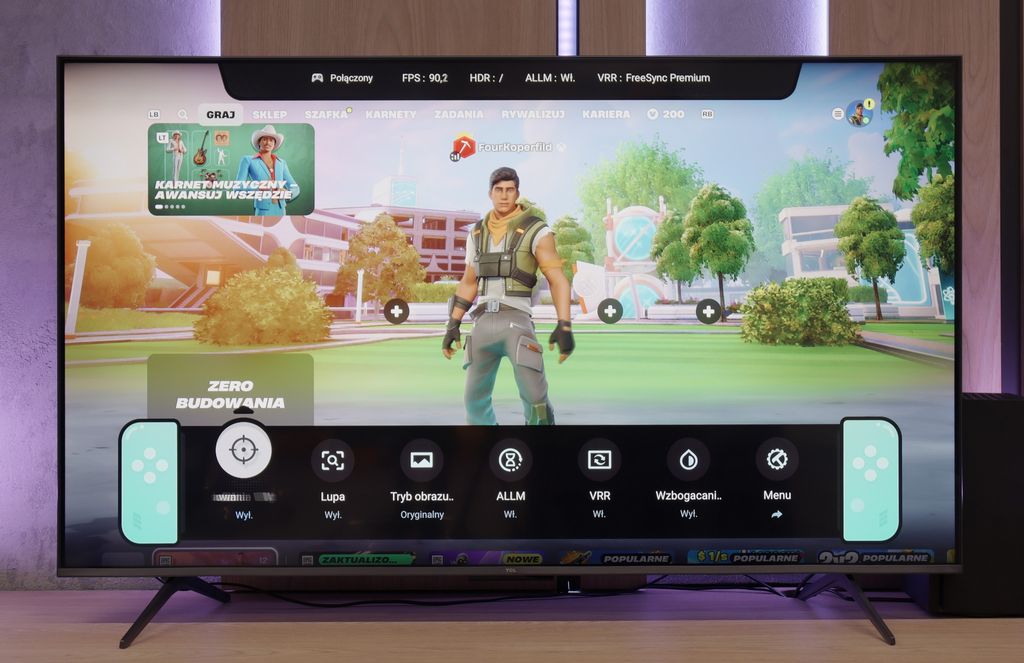
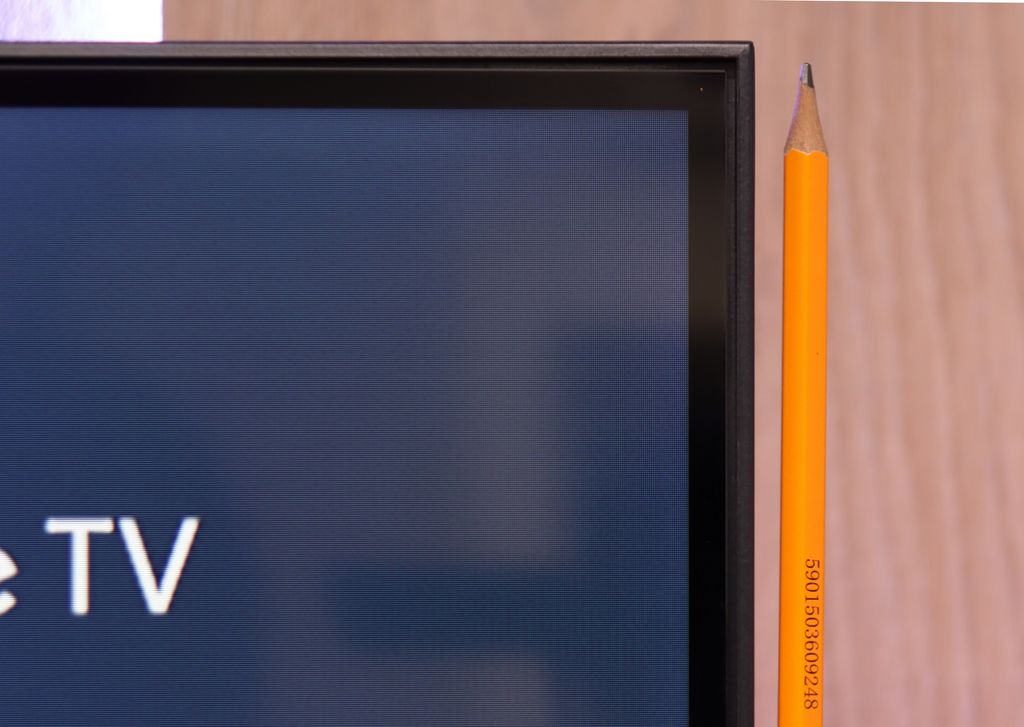
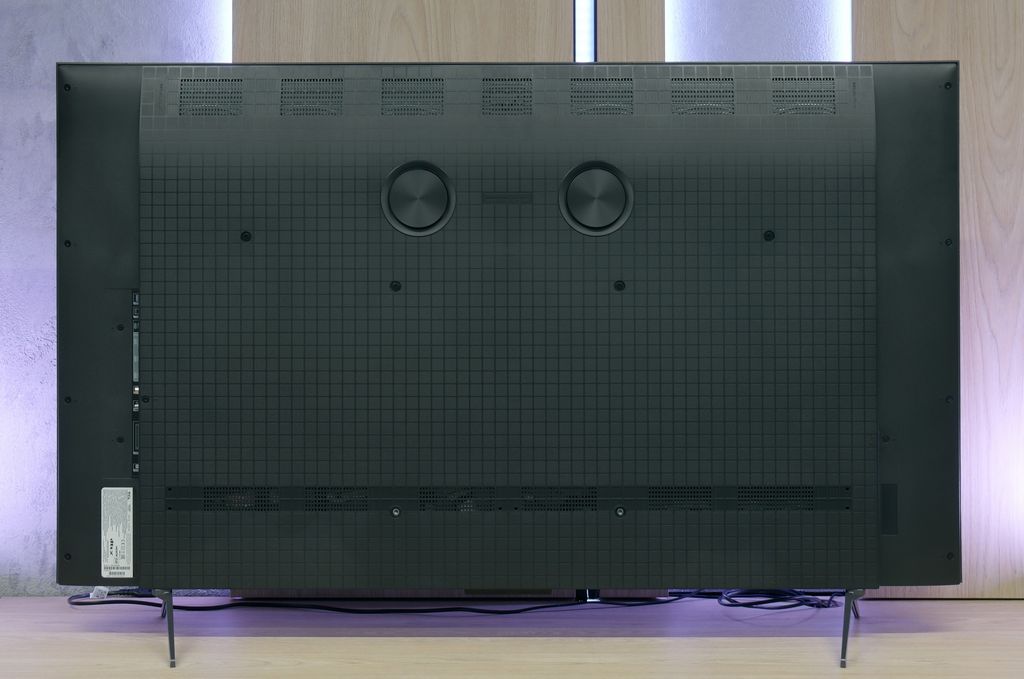
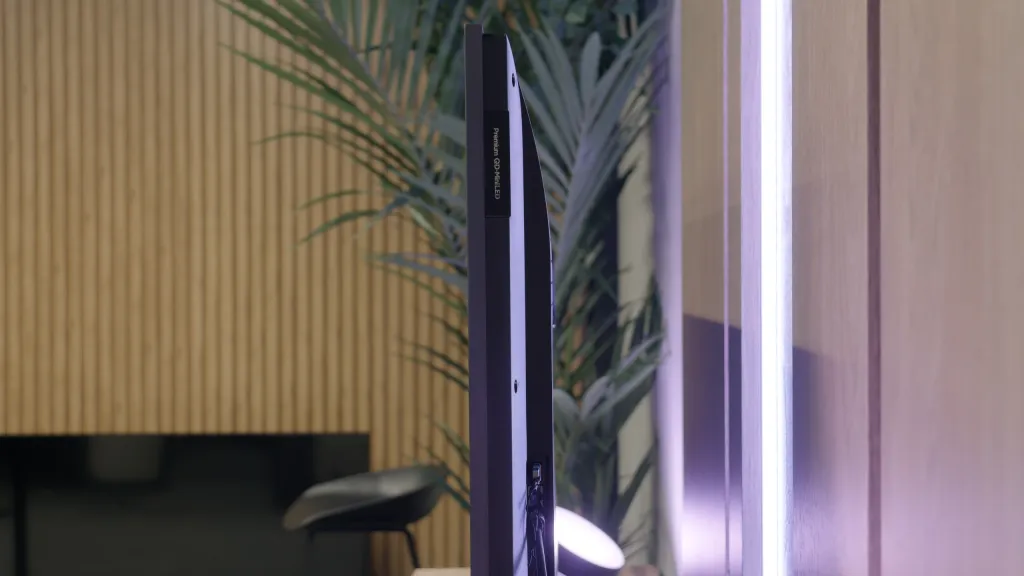
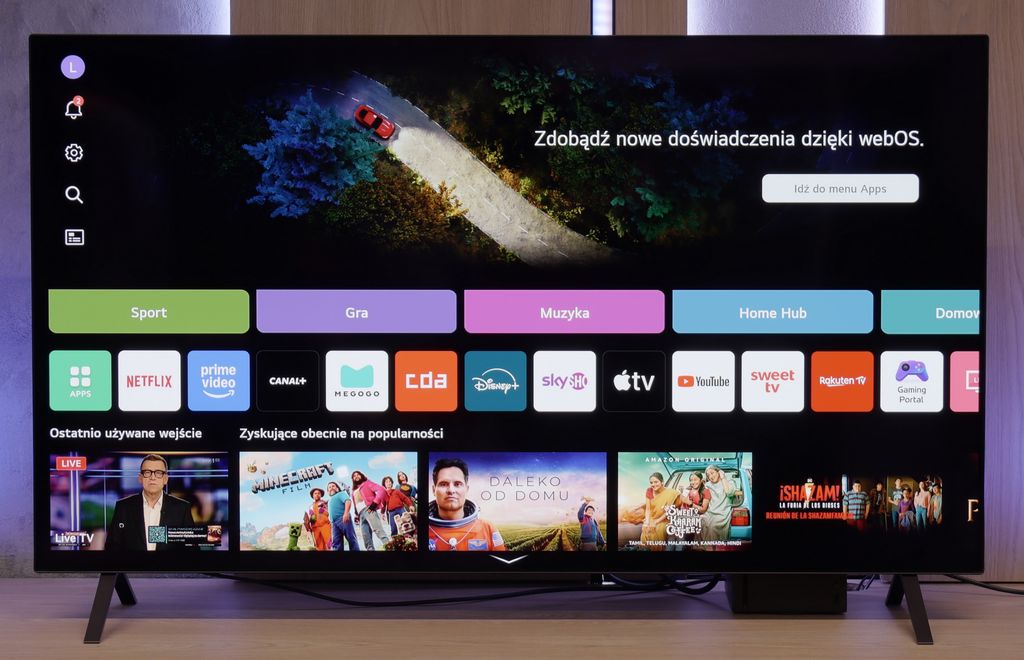
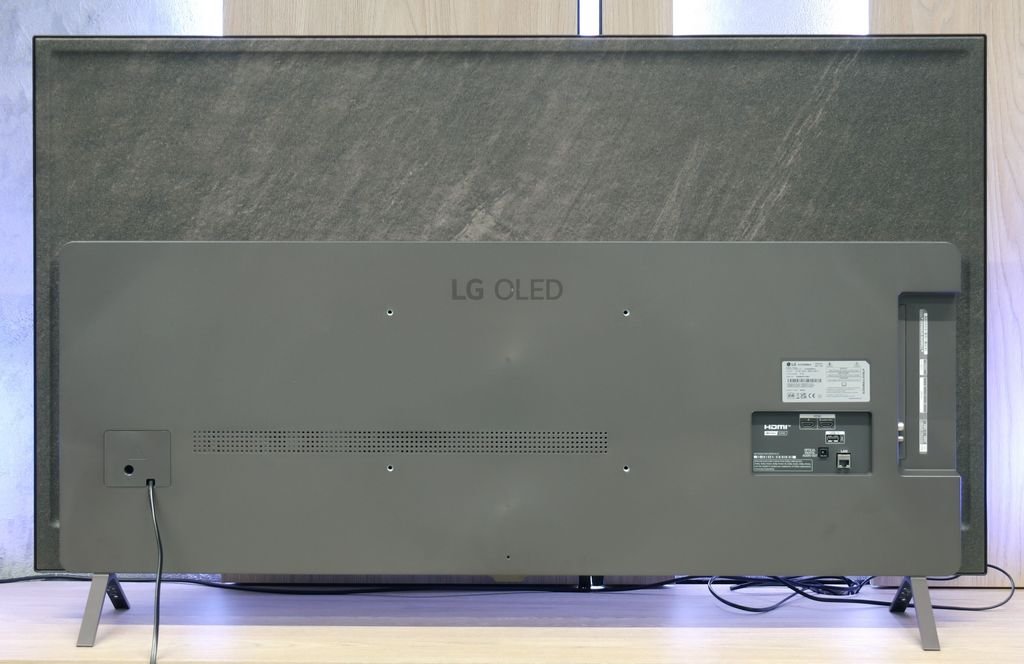
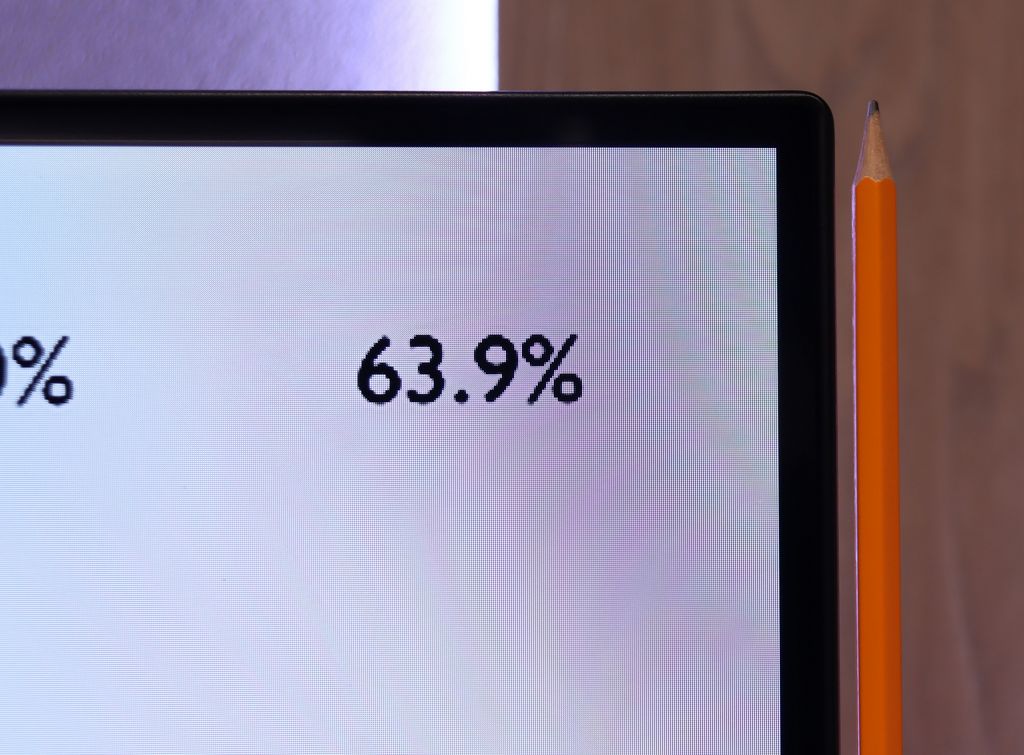
Contrast and black detail
7.3/10
10/10
Local dimming function: Yes, number of zones: 180 (10 x 18)
Contrast:

Result
114,000:1

Result
17,300:1

Result
16,200:1

Result
9,900:1

Result
4,850:1

Result
∞:1

Result
∞:1

Result
∞:1

Result
∞:1

Result
∞:1
Halo effect and black detail visibility:
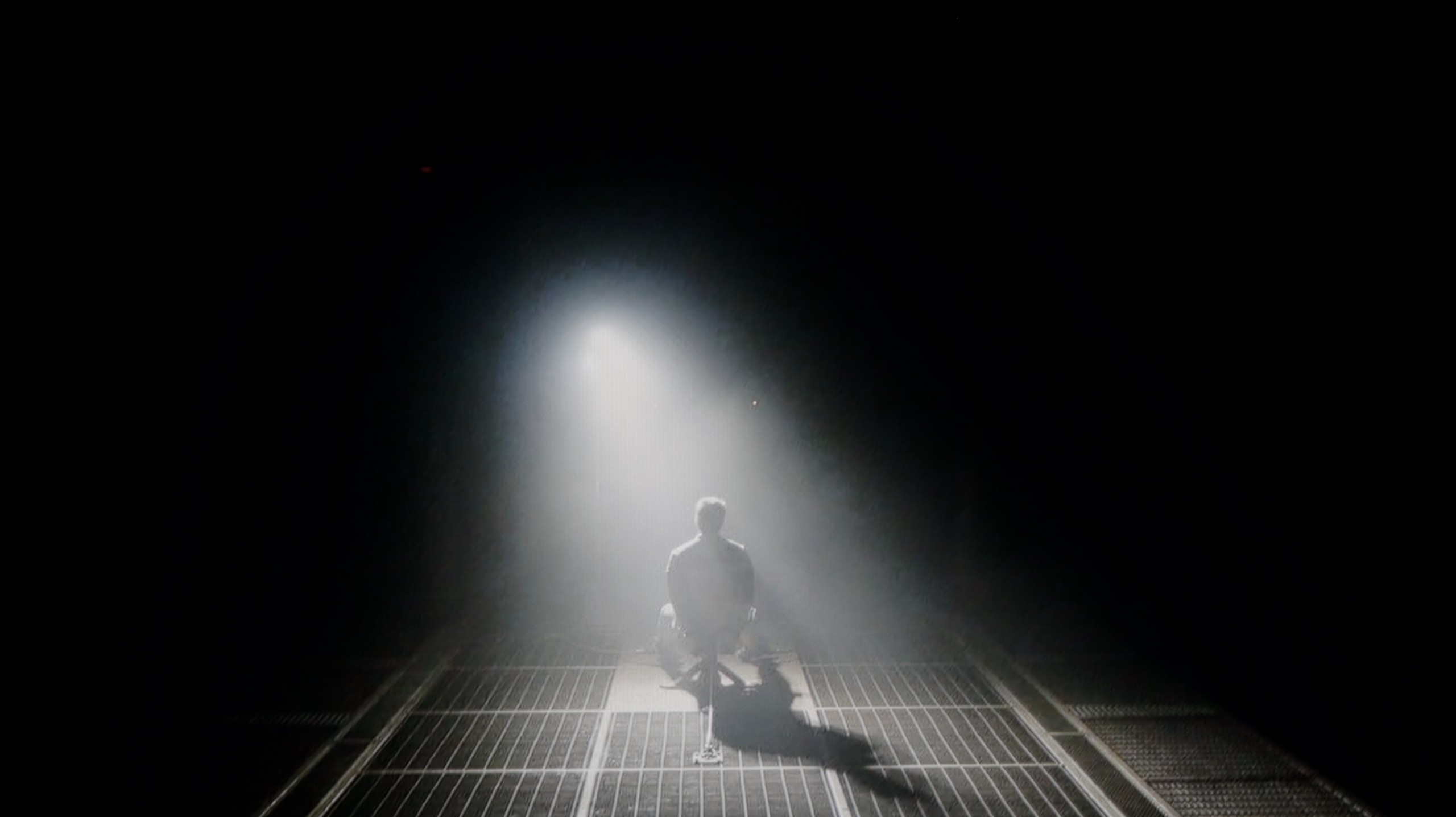
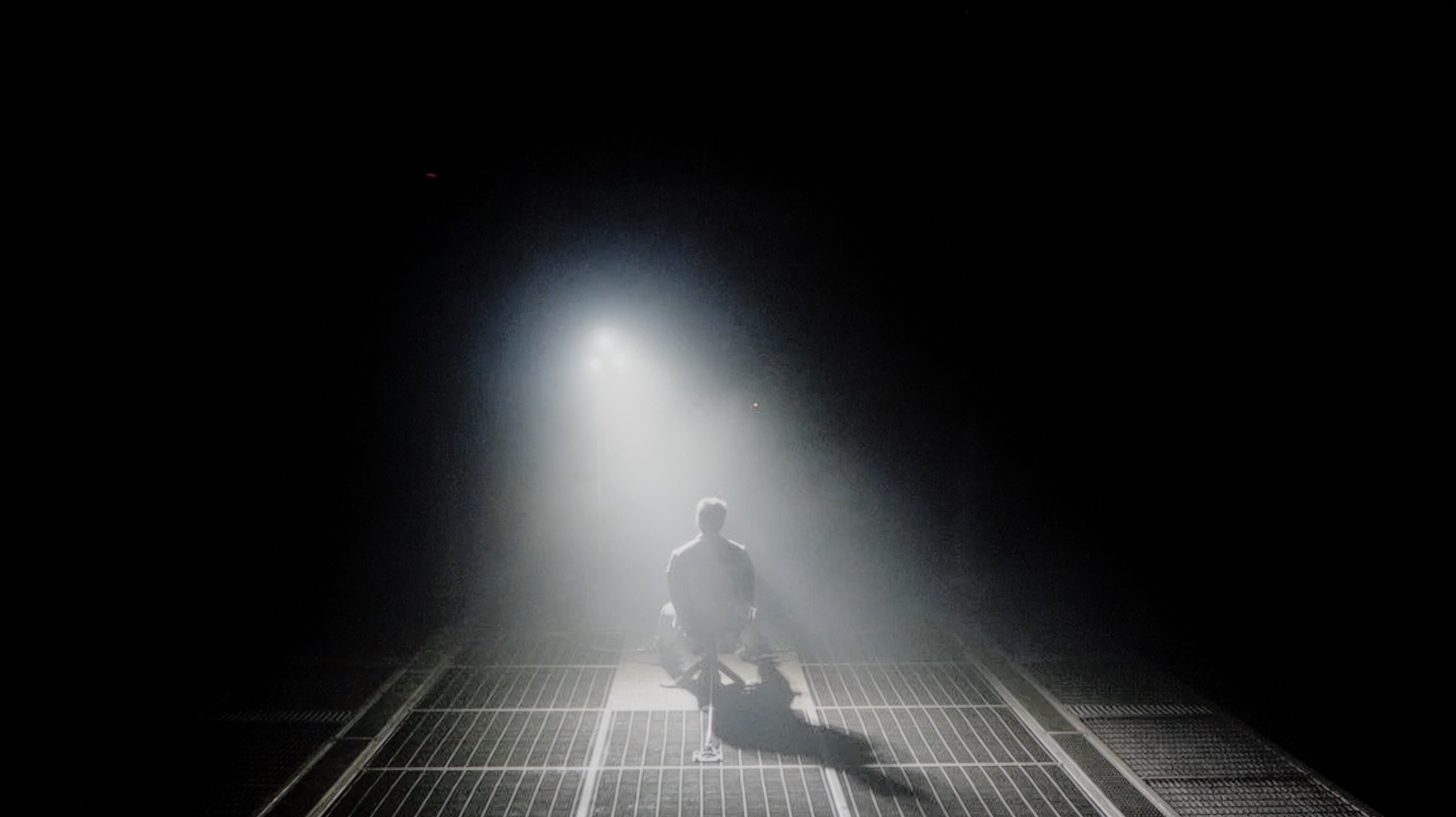
The TCL C6K is based on a VA matrix, more specifically HVA produced by TCL CSOT, which already provides a solid native contrast of 6000–7000:1 without the use of local dimming. However, the real strength of this model is the Mini-LED backlighting with the ability to dim individual zones. In the tested 55-inch version, we counted about 180 of them, and as the diagonal increases, this number naturally rises. For a television in this price segment, the contrast is truly impressive. In simpler film scenes, such as excerpts from "Oblivion," it performs excellently, and shots completely filled with black make a great impression. Of course, due to the nature of Mini-LED technology, it’s not always possible to avoid issues – in more challenging frames with many bright details, halo effects or too strong dimming of some elements appear (regardless of local dimming settings). Nevertheless, the contrast can be considered a strong point of the C6K.
If you're looking for changes compared to last year's LG B4, we'll dispel any doubts right away - you won't find any in this category at all. And that's a good thing. Because how do you improve something that already borders on perfection? The LG B5, as is fitting for an organic WOLED screen, offers pitch-black scenes and contrast that's hard to find even in the most expensive LCD displays. The screen is as clear as a tear – no bleed-through, no smudges, no halo effects that can ruin the atmosphere in cinematic scenes. Everything is in its place here. Details separate from the black with surgical precision, nothing blends together, even in the most demanding sequences from movies like The Revenant or Oblivion. This is the type of TV that can enchant you especially when the room goes completely dark. When the lights go out, the LG B5 takes center stage – and it does so magnificently. In these conditions, OLED shines the brightest, and even top LCD models – despite advanced dimming and hundreds of zones – simply fall behind.
HDR effect quality
4.9/10
6.2/10
Luminance measurements in HDR:

Result
612 nit

Result
202 nit

Result
424 nit

Result
144 nit

Result
587 nit

Result
587 nit

Result
593 nit

Result
628 nit

Result
589 nit

Result
470 nit
Scene from the movie “Pan” (about 2800 nits)


Scene from the movie “Billy Lynn” (about 1100 nits)


Static HDR10


Dynamic: Dolby Vision
Dynamic: Dolby Vision


HDR luminance chart:
LG OLED B5
HDR luminance
Luminance of RGB colors
TCL C6K
HDR luminance
TCL C6K is a moderately bright TV that can showcase its full potential under the best cinematic conditions – the maximum brightness is around 600 nits. In scenes with large, intense light sources, the HDR effect can be really satisfying, providing a sense of cinematic brilliance. However, it should be noted that when managing the backlighting zones, there are situations where some elements become dimmed and sometimes can even become barely visible. It is clear that there is a lack of proper algorithm optimization here, although looking at the technical parameters in this price range, the design itself performs very well.
LG B5 is a moderately bright OLED TV. Regardless of the scene, it can generate around 500 nits of peak brightness. And interestingly, it does this even in full-screen shots flooded with white, where most OLEDs usually fall short. So, is this screen suitable for HDR movies? Yes – absolutely, because such brightness really allows you to feel the magic of HDR effects. However, it's worth noting that compared to last year's model B4, the new B5 is darker – by about 100 nits. It may seem like a small difference, but at such average peak values, it makes quite a significant difference. Fortunately, the TV makes up for it with another advantage – excellent coverage of the DCI-P3 and BT.2020 color gamut. As a result, HDR movies look really colorful, vibrant, and impressive even in more demanding scenes.
Factory color reproduction
5/10
8.2/10


Factory Mode
After calibration


Factory Mode
After calibration
This year's TCL televisions feature a Filmmaker mode, and it must be admitted that it is definitely the best choice straight out of the box. This is the mode we recommend for everyday watching of movies and series. Unfortunately, as is often the case, the best doesn't mean perfect. In the case of SDR content, the image was too warm because the red was strongly emphasized in the white balance. On the other hand, with HDR content, we had the opposite impression – the image became cooler than it should have been due to excess blue. Additionally, the brightness characteristic sometimes led to highlights being blown out. In practice, this resulted in quite noticeable color test inaccuracies that are hard to accept in a mode advertised as "by the creators."
We tested the B5 in Filmmaker mode and... we would like to see more TVs like this straight out of the box. Really. The white balance is set very well – there is practically nothing to complain about. Well, if one were to be very picky, one might notice a slight deficiency in blue, which makes the overall picture have a slightly yellowish tint. But that’s just our editorial nitpicking. Most of you probably won't even notice it. We also have some minor reservations about brightness management in HDR format. The EOTF curve – that is, the one responsible for how the TV distributes brightness in a scene – is slightly below the ideal. In practice, it can happen that the darkest parts of the image may be displayed too dark and simply... disappear. But these are details that only come out in measurements. Overall: we are impressed. But we also know that LG TVs respond very well to professional calibration. They can produce nearly reference-quality images, so – even though it's already very good out of the box – we allowed ourselves to take an extra step and fine-tune everything to perfection.
Color reproduction after calibration
7.5/10
9.1/10
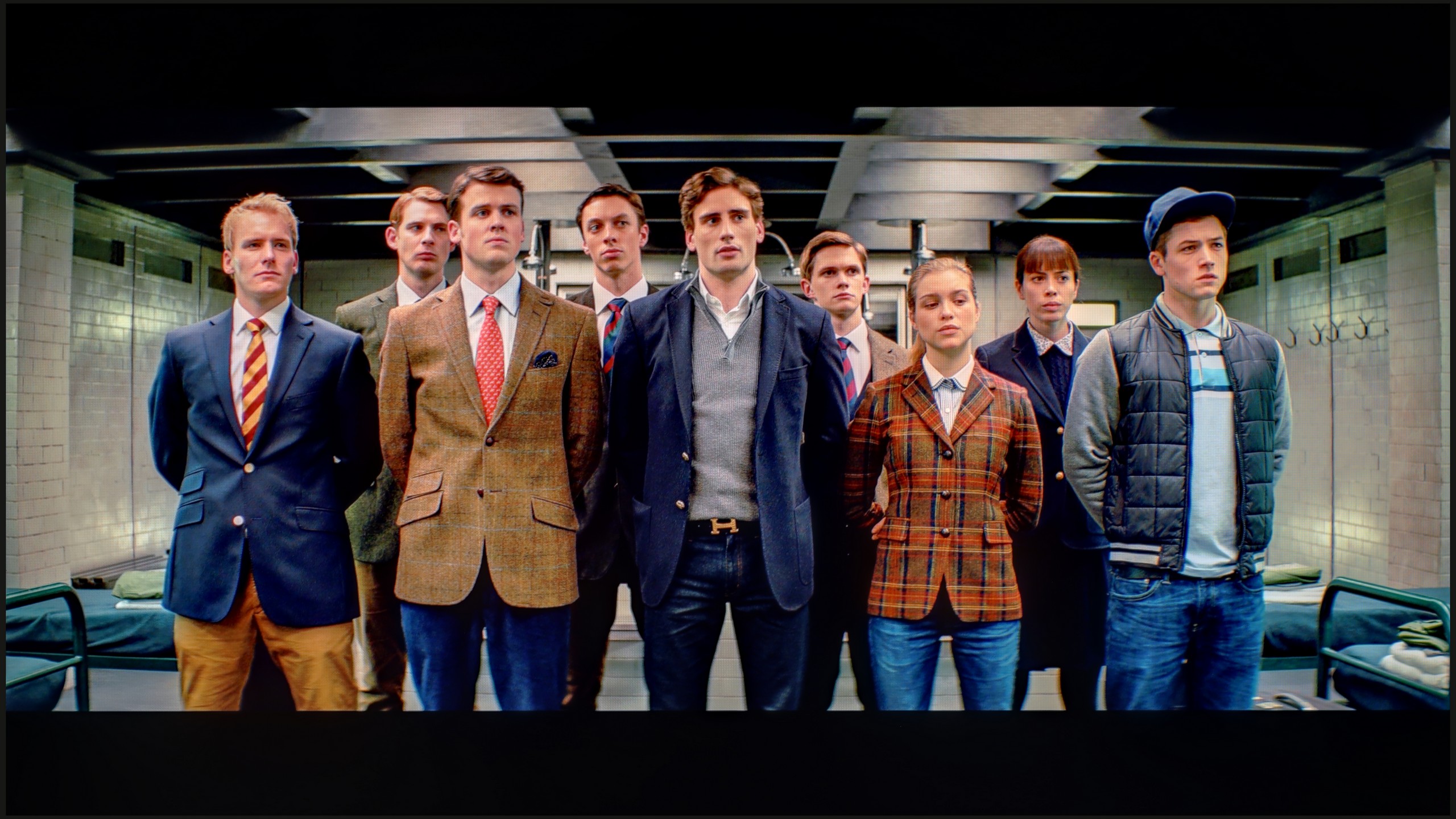

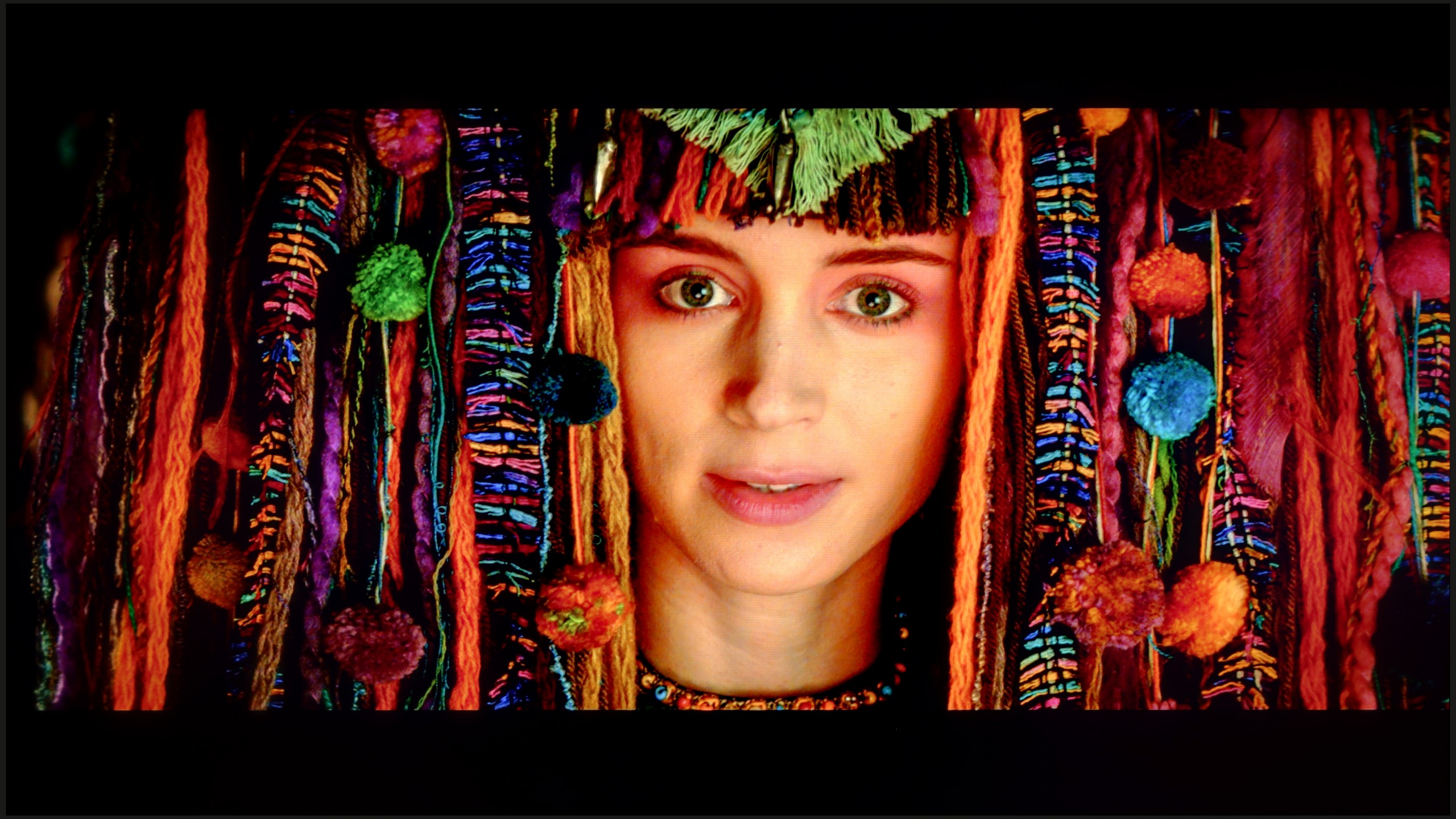
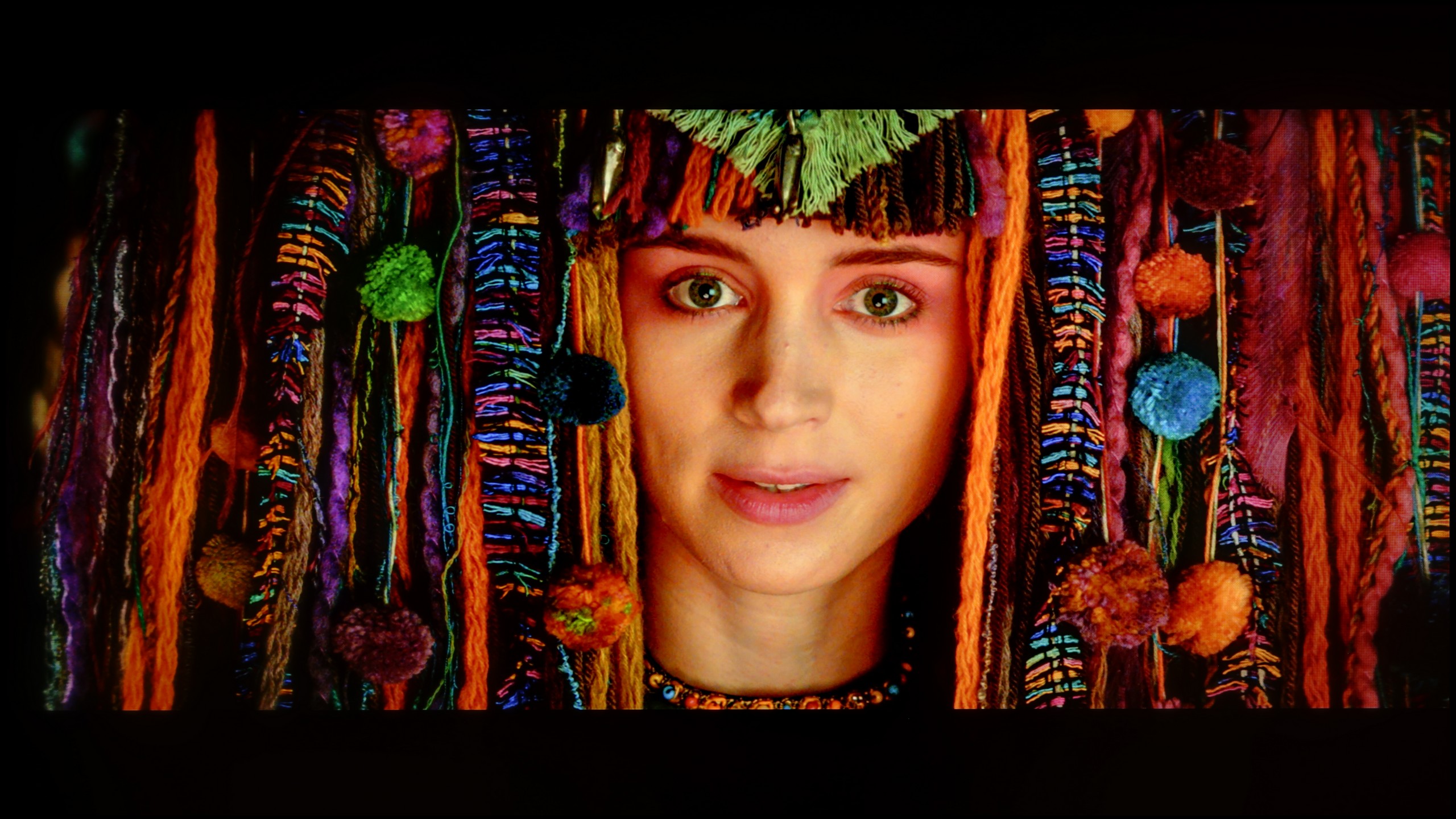
Thanks to the white balance correction, it was possible to significantly reduce the C6K's tendency to distort colors, which resulted in a very good final outcome. After calibration, we will no longer observe the effect of excessive warming of scenes in SDR or overly cooling the image in HDR. However, it is worth taking a closer look at the brightness characteristics. In SDR content, there are few complaints – the image looks really good, especially in older movies, TV shows, or materials from YouTube. This is much worse for HDR content. Analysis of the EOTF curve suggests that everything is fine, but in practice (EOTF in films), the limitations of the construction become apparent. The TV tends to overly brighten the smallest parts of the frame, and in other situations, it can dim the entire scene too much. The effect of calibration is therefore evident, and in terms of color, the C6K has gained quite a lot, but certain limitations arising from local dimming and, in fact, its management by the C6K simply cannot be overcome.
We must admit that we didn't have much work with the LG B5. It's one of those TVs that looks good right from the start, but after calibration… it can really impress. The white balance was brought to almost perfect levels – to a degree of error invisible to the human eye, unless you are a professional colorist with a magnifying glass at the screen. We also managed to control the TV's slight tendency to dim the darkest details, especially in HDR scenes. After proper tuning, everything looks coherent: the black is still deep, but not information-hungry. The highlights retain a natural sparkle, and the colors align with the director's vision. It's really one of those models that show you don't have to spend a fortune to get almost reference-quality image. If you can decide on professional calibration – it's definitely worth it for the B5.
Smoothness of tonal transitions
9.5/10
7.2/10





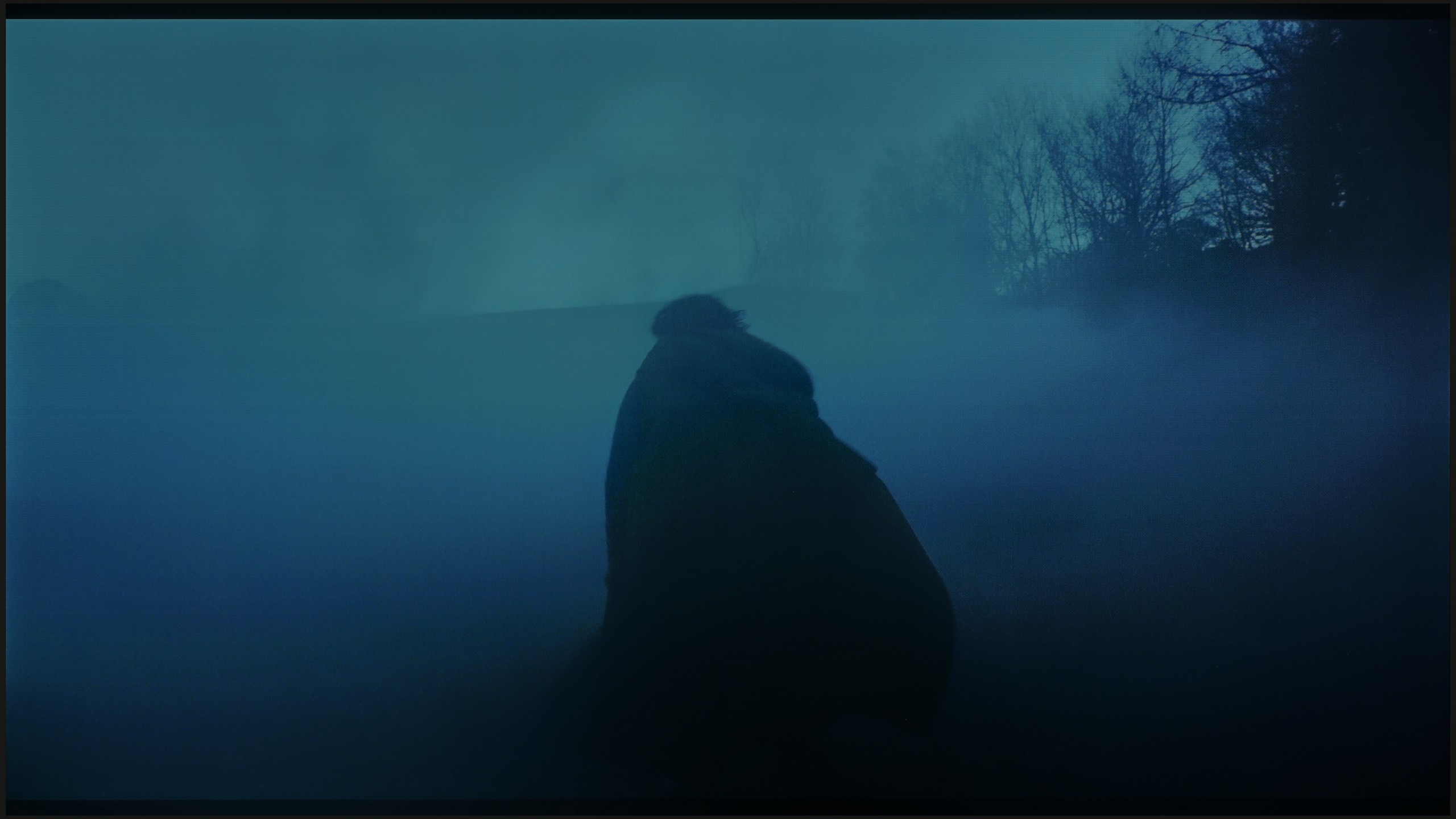






The transitions between colors in the C6K are very smooth, and it's hard to find any banding. The image looks natural, and any minor imperfections can only be noticed on bright test patterns – and that with really careful viewing. In everyday use, the effect is simply great, and one can confidently say that in this category, the C6K performs exceptionally well.
LG B5 handles color gradation quite decently. In bright scenes, where we have smooth transitions between skin tones, the sky, or backgrounds, the television merges colors seamlessly and without issues. At first glance – it's good, especially considering the price. But it's enough to reach for more challenging material – those darker, more demanding scenes with a lot of subtle transitions – and the problems begin. Minor artifacts, false contours, slight bumps appear. It's still not a level that stands out or distracts from the plot, but the difference compared to more expensive WOLED models – and even more so QD-OLED screens – becomes noticeable.
Image scaling and smoothness of tonal transitions
5/10
7.5/10
Smooth transition function
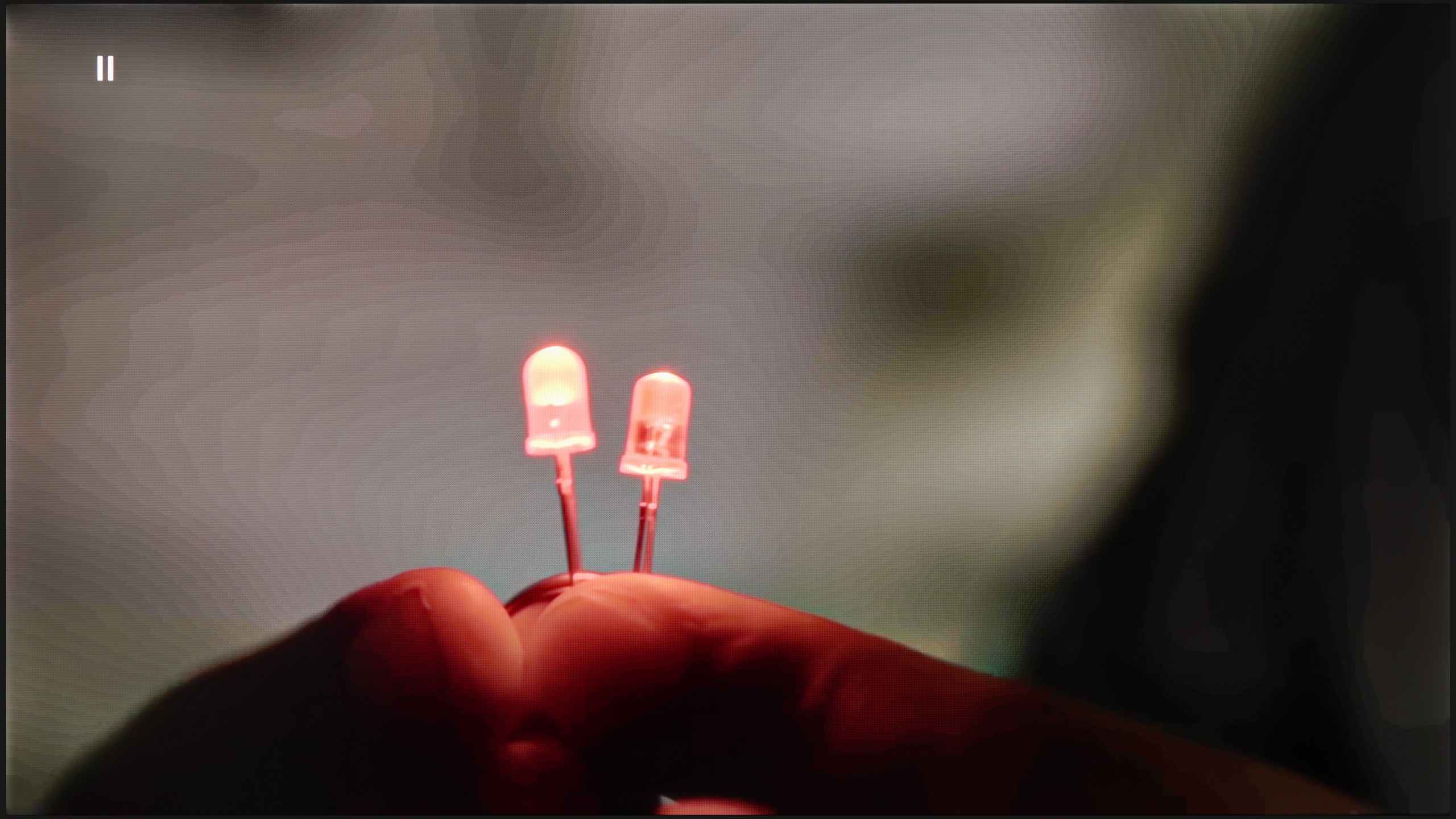
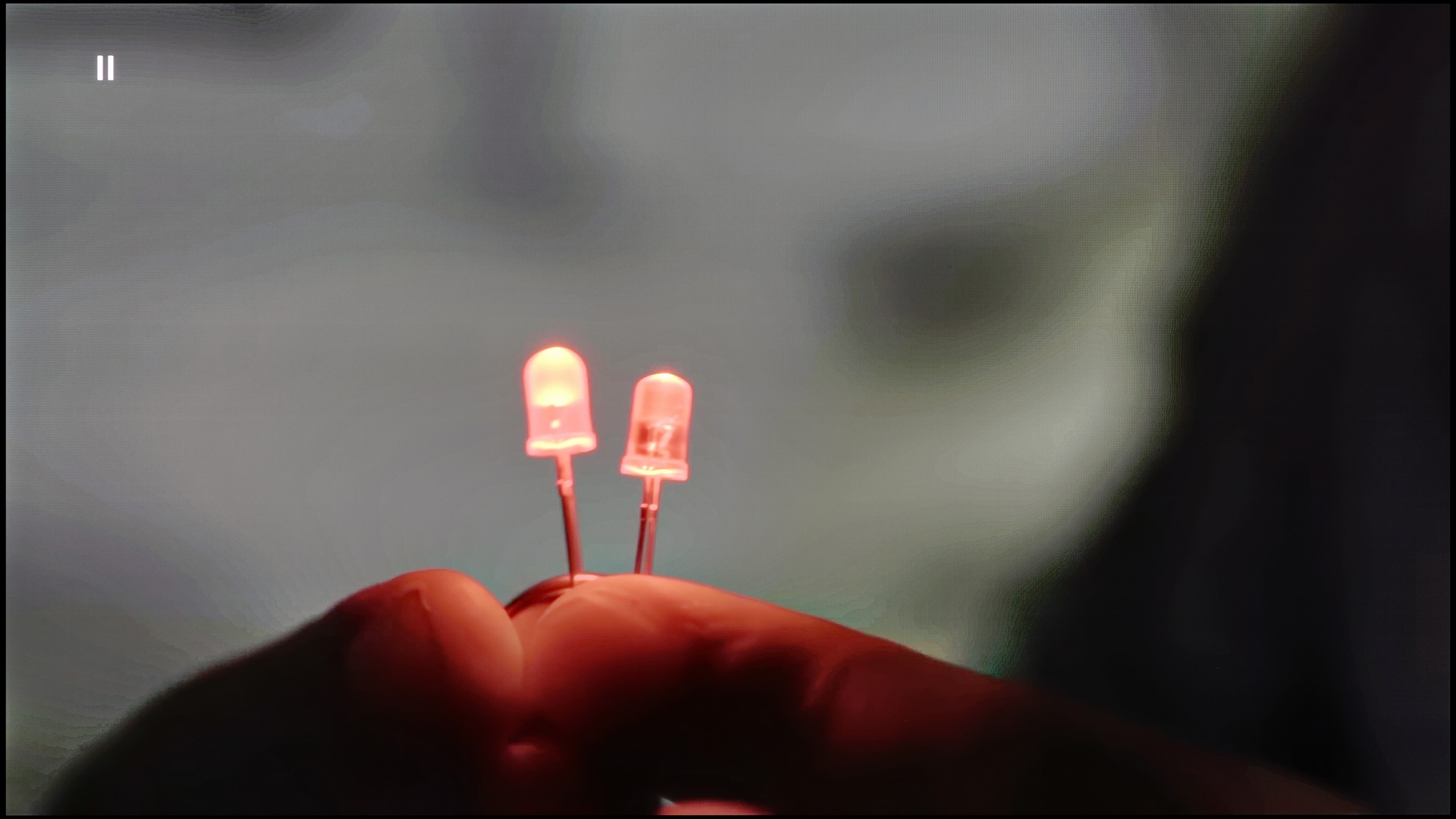
Image without overscan on the SD signal


The TCL C6K performs quite well in terms of scaling. Lower quality materials look acceptable, and the lack of overscan issues means that the image is displayed in full, without cropping. However, one cannot expect miracles – content of very low quality will not gain new life here, as the image processor has its limitations. On thin lines or details, the characteristic tearing is visible, which reveals the absence of advanced image enhancement algorithms. It is also a pity that the C6K lacks the feature for smoothing tonal transitions – in older films or video materials, color banding can be noticeable and may be bothersome during long viewing sessions.
LG B5 really surprised us positively in terms of dealing with lower quality content. Thanks to the enhancement and smoothing features, HD or even SD materials get a new life. Importantly – when this option is turned on at the "low" or "medium" level, we don't get the impression that the image is artificially softened or overly smoothed. Details remain intact, film grain does not disappear, and object edges do not look washed out 😉. It's a really useful tool – especially if you watch terrestrial TV, archival materials, or content from YouTube in lower resolutions. The image is clean, cohesive, and simply pleasant to the eye.
Upscaling as such works very well – even content of poor quality is rendered with surprising fidelity. Unfortunately, there was a small hiccup. While the menu offers an option to turn off overscan, the television still struggles to display very low-resolution images correctly. It’s a minor detail, but when watching older materials – it can be annoying.
Blur and motion smoothness
7.3/10
8.5/10
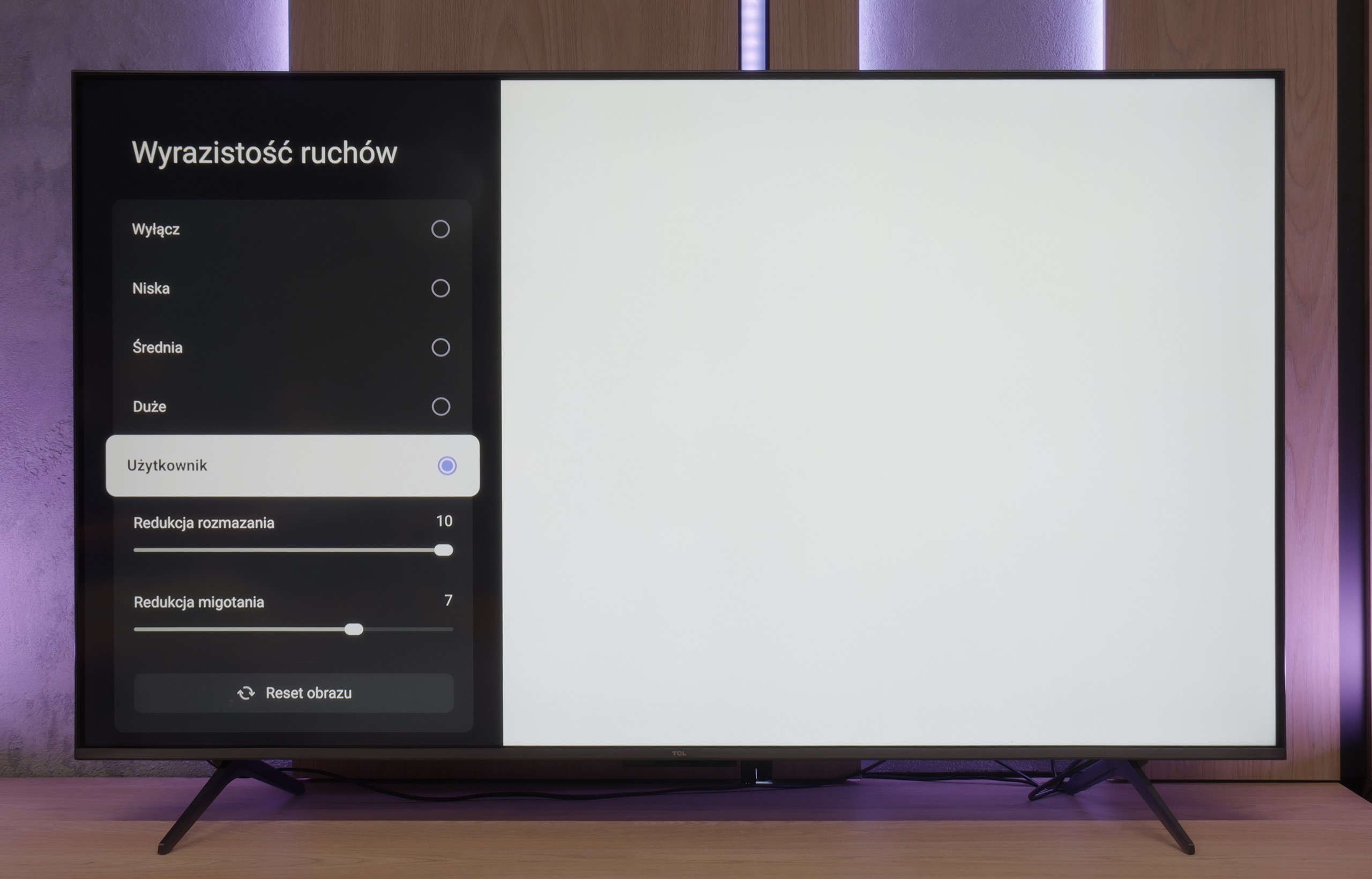
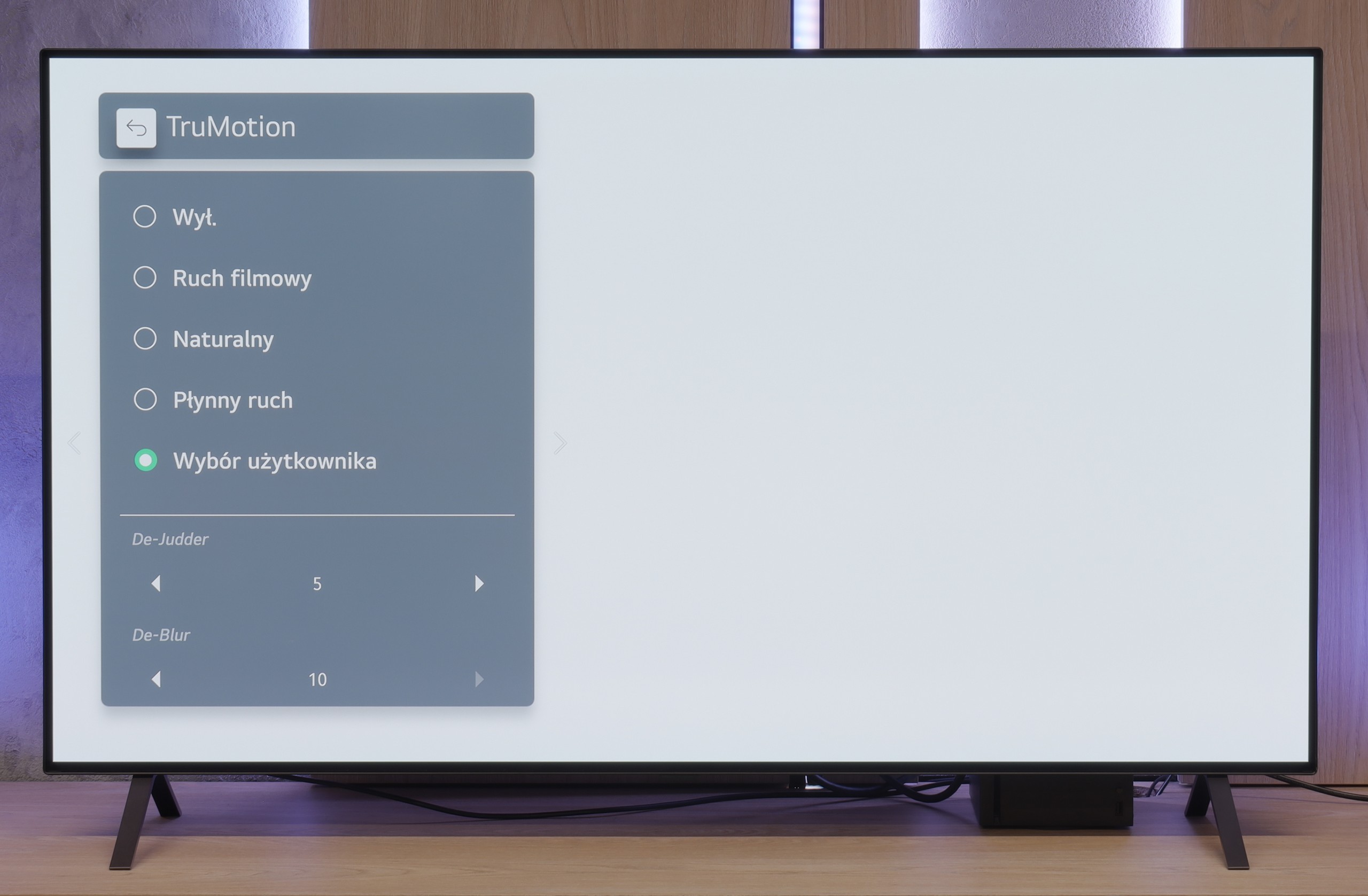
Blur (native resolution, maximum refresh rate):
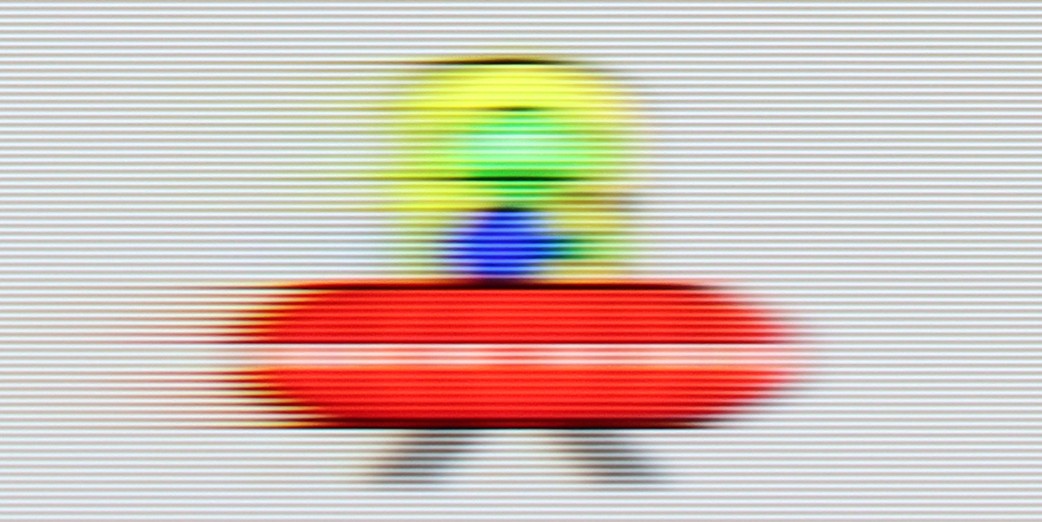
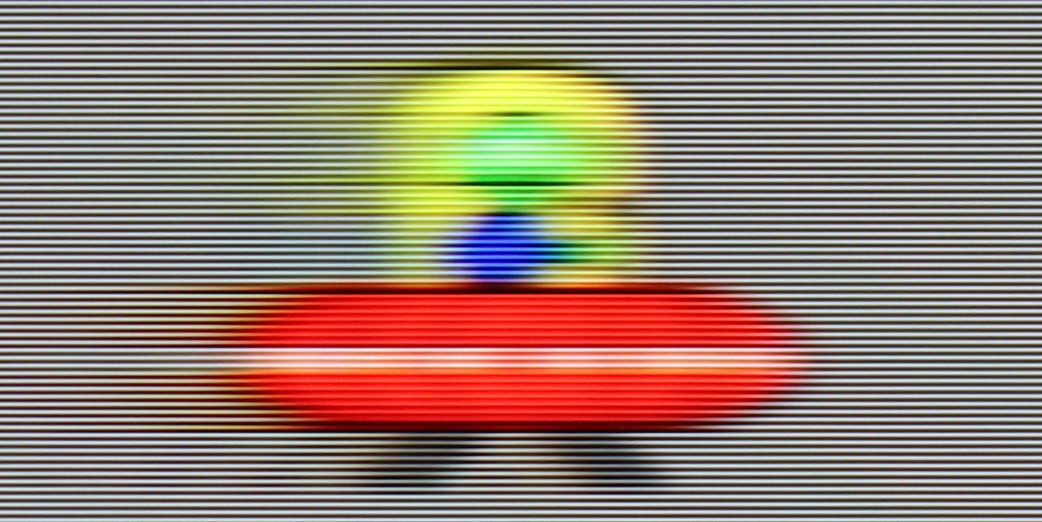
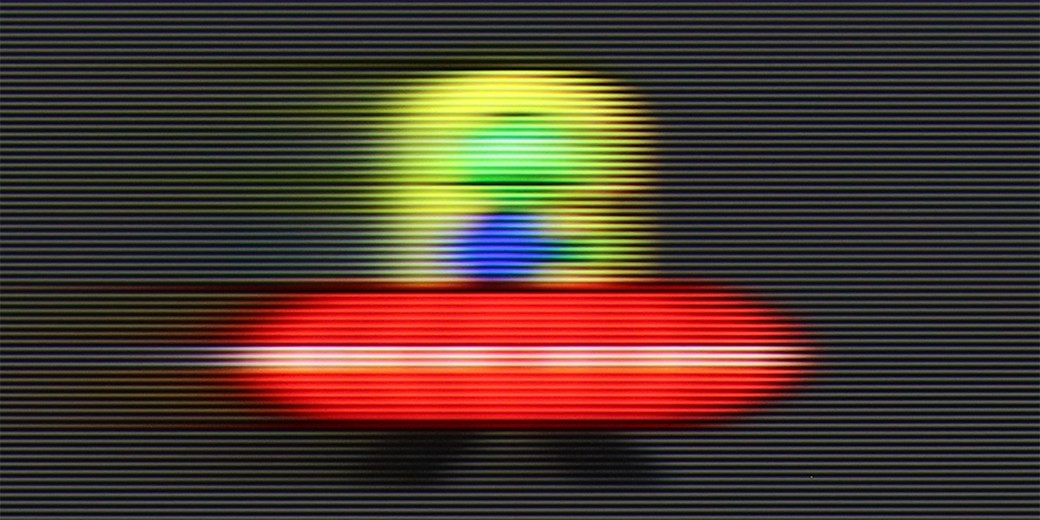



Blur (BFI function enabled):

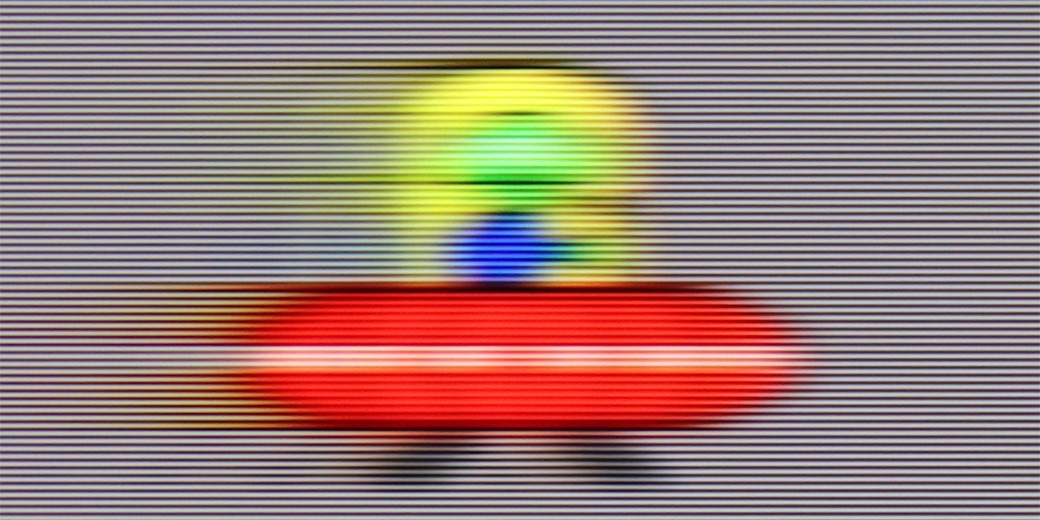
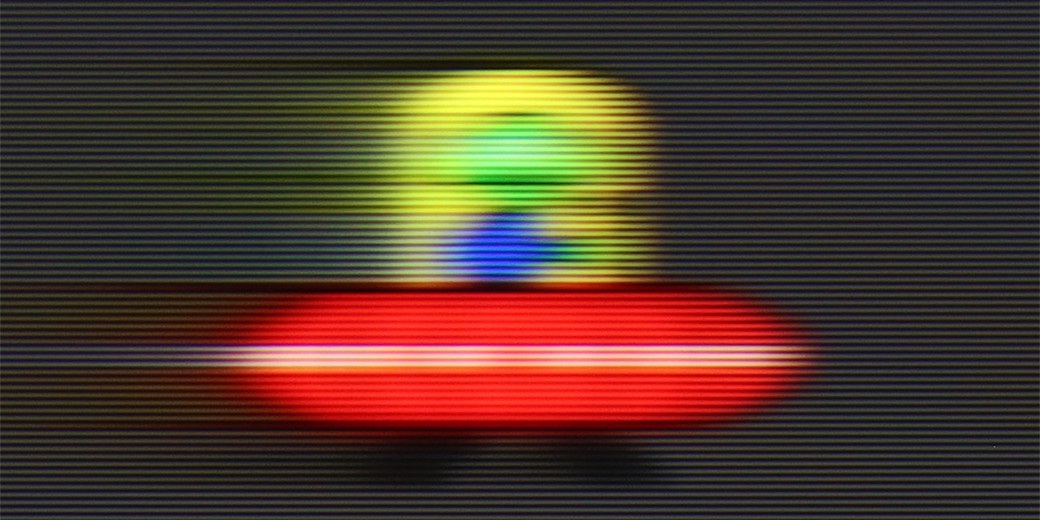
TCL C6K features a 144 Hz panel, which is a significant advantage in this price range. This is an important step forward compared to the previous model C655 PRO, which offered only 60 Hz at 4K. The difference is especially noticeable when watching sports or playing games – the ball, athletes, or fast action in a game are displayed more clearly and without losing details. An interesting fact is also the ability of the panel to operate at 240 Hz, which the manufacturer does not mention in official materials. We will return to this topic when discussing the game mode for PC.
TCL also added a feature for movie watchers: "Motion Clarity," which allows you to adjust the image to your preferences using two simple sliders. You can keep the movie frame visible or opt for a very smooth, almost theatrical effect. This way, everyone can find settings tailored to their taste.
The LG B5 is a television with a 120 Hz OLED panel. It may not sound as impressive as the marketing terms "144 Hz" or "165 Hz" found in gaming monitors, but honestly? The smoothness is still excellent. The picture is sharp, smooth, and simply enjoyable to watch – even when there’s a lot happening on the screen. The organic panel does its job – the pixel response time is nearly instantaneous, which means there’s no blurring or smearing that can ruin dynamic shots. Sports, fast-paced games – everything looks clear and distinct.
We also have LG's classic motion smoother, TruMotion. This feature allows you to smooth out films shot at 24 frames per second – in other words, most of what you watch on Netflix or on Blu-ray discs. If you set the “De-Judder” slider to lower values, you'll get an image closer to the cinematic experience – with a slight judder, but without artificiality. Higher settings? Soap opera effect guaranteed. Fortunately, LG gives you the choice, and you can tune everything as you like.
Console compatibility and gaming features
9.8/10
10/10
- ALLM
- VRR
- VRR range48 - 240Hz40 - 120Hz
- Dolby Vision Game Mode
- Correct implementation of HGIG
- 1080p@120Hz
- 1440p@120Hz
- 4K@120Hz
- Game bar
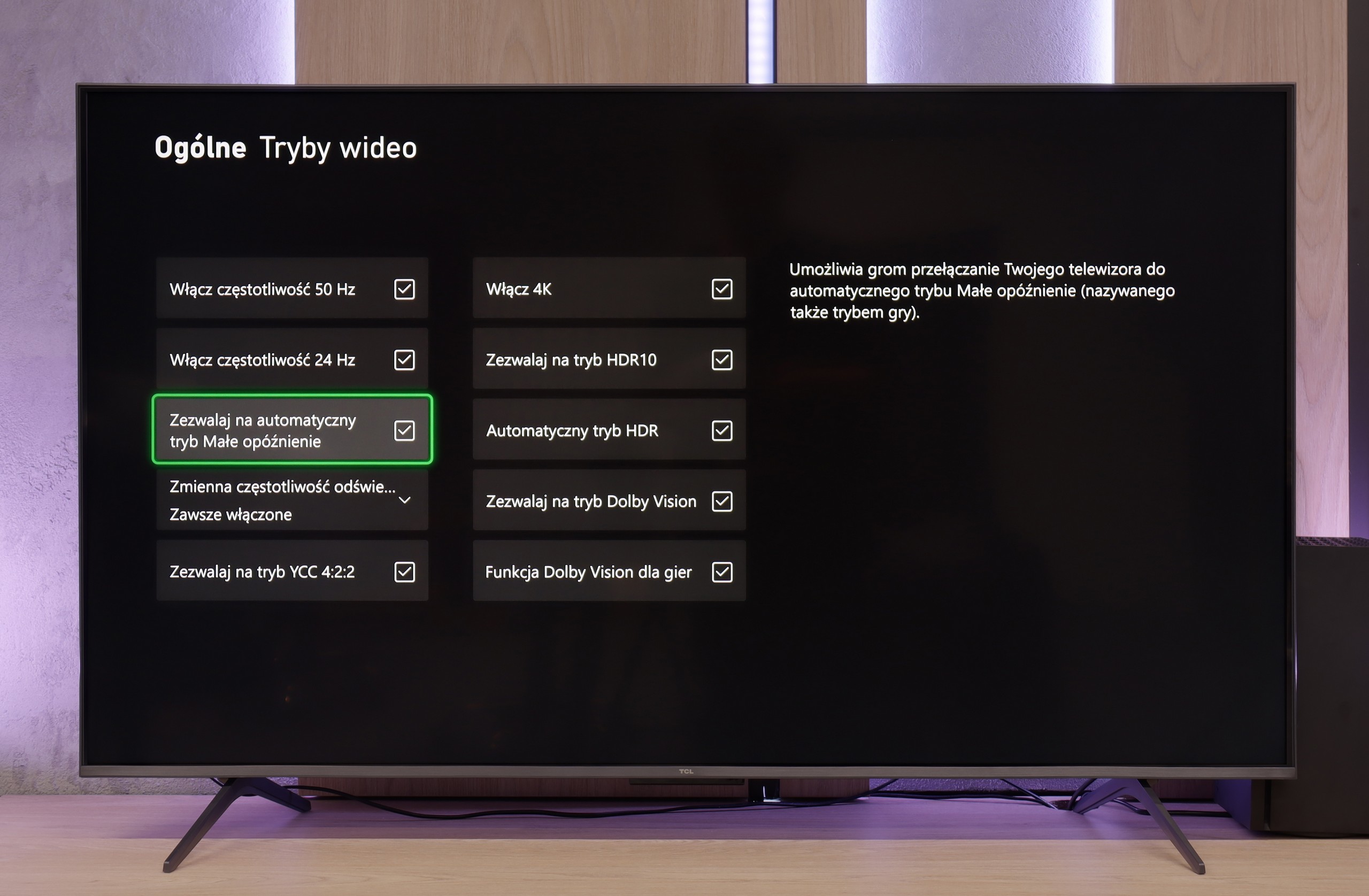
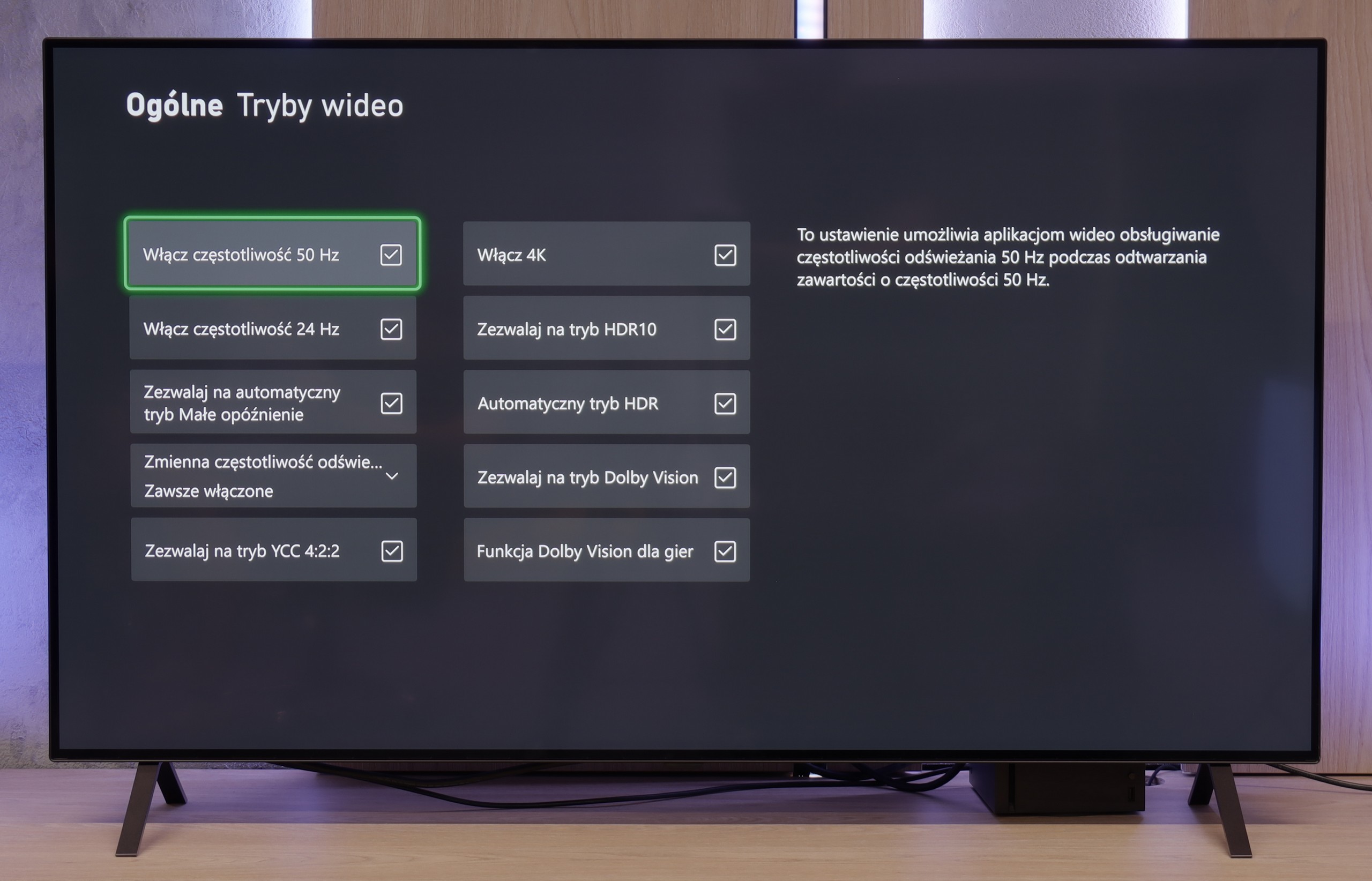
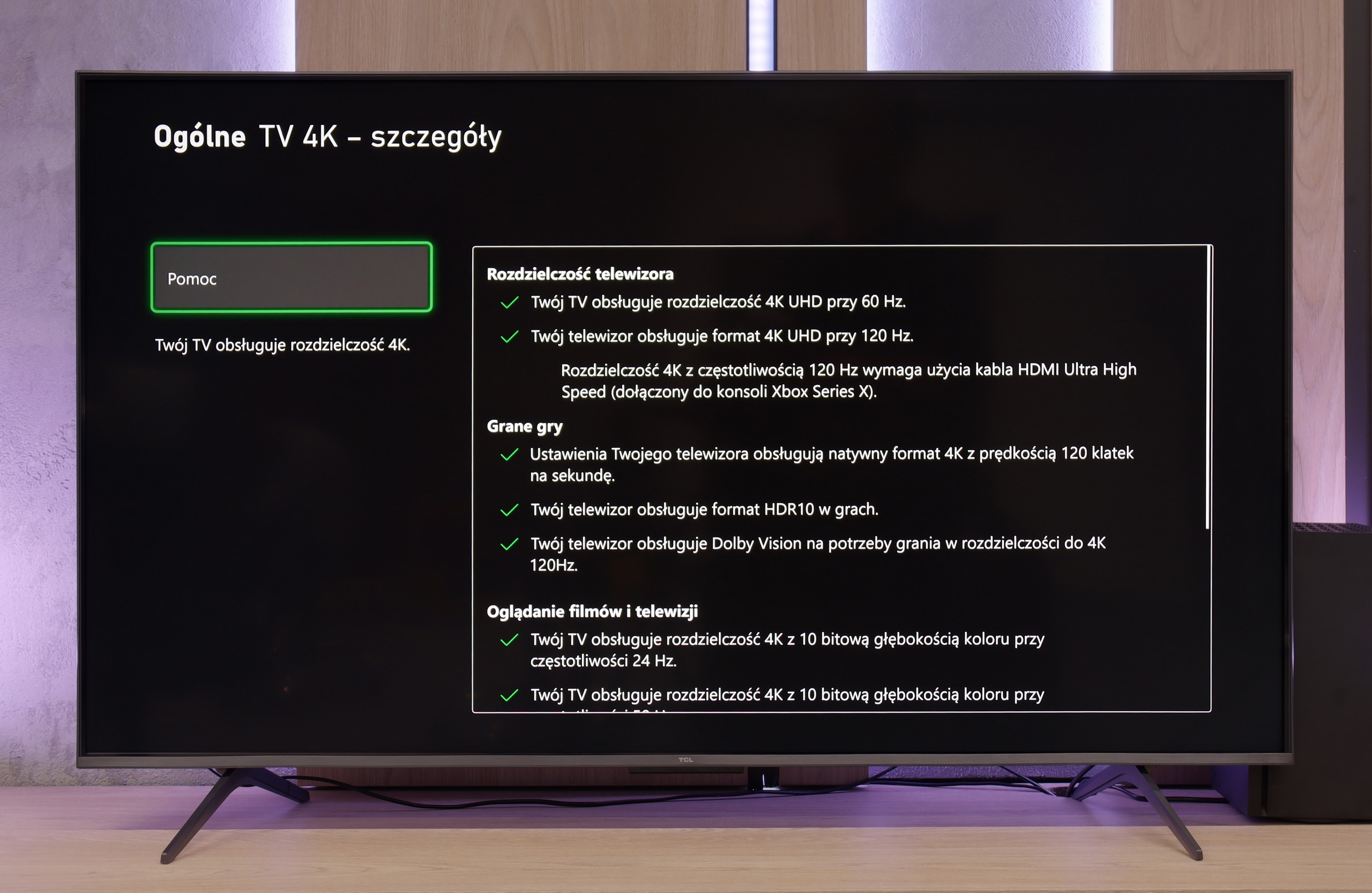
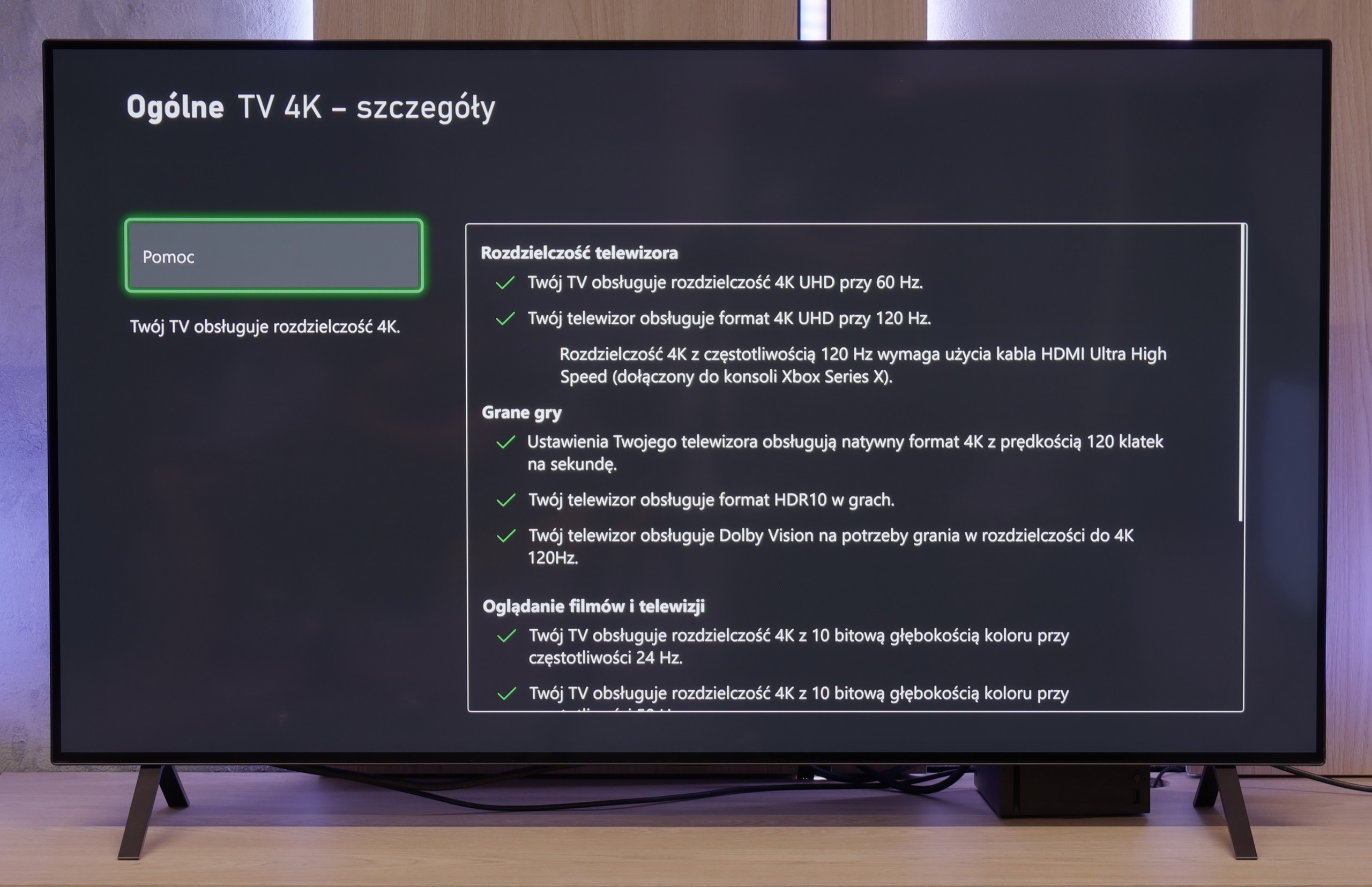
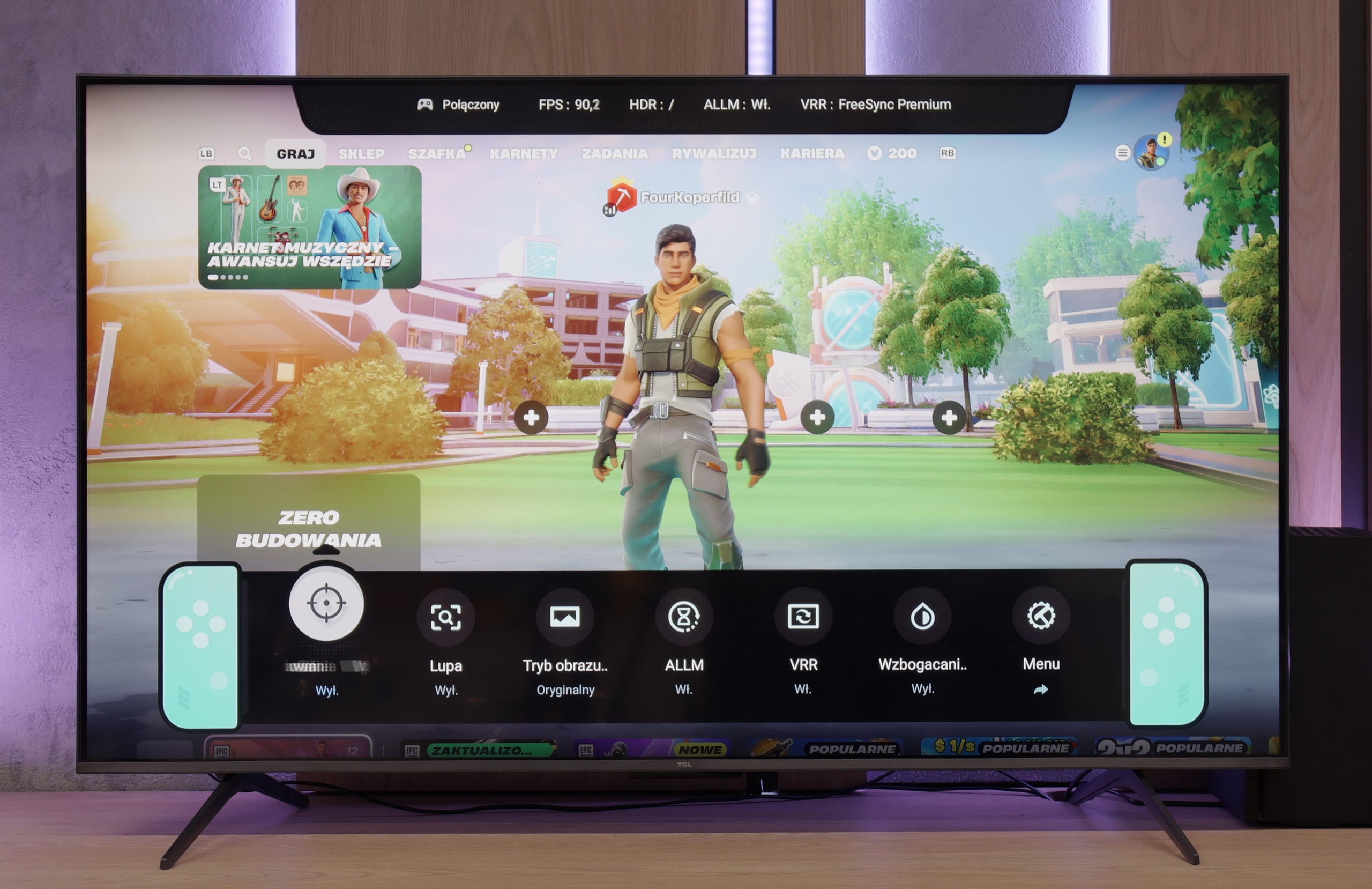
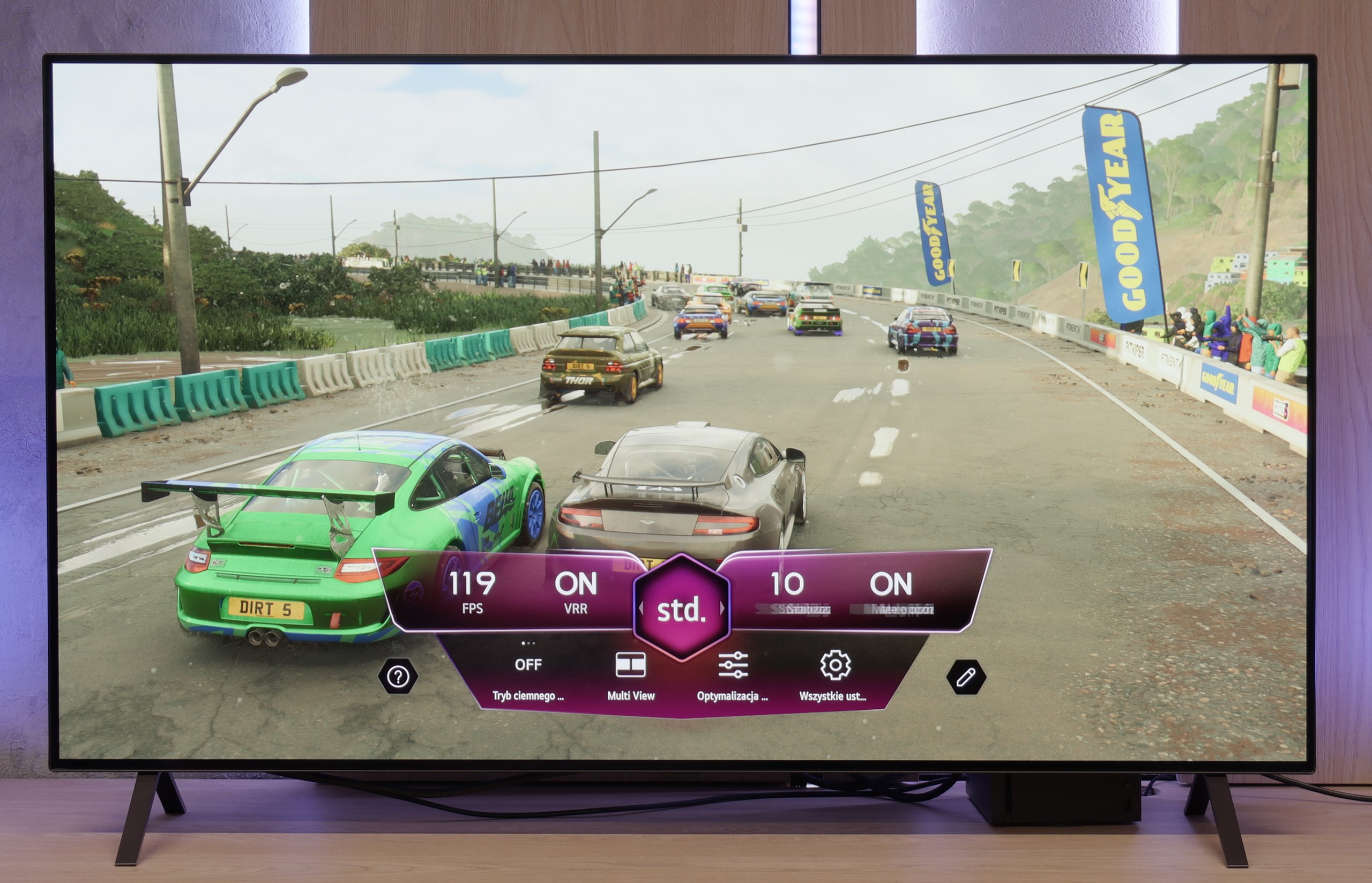
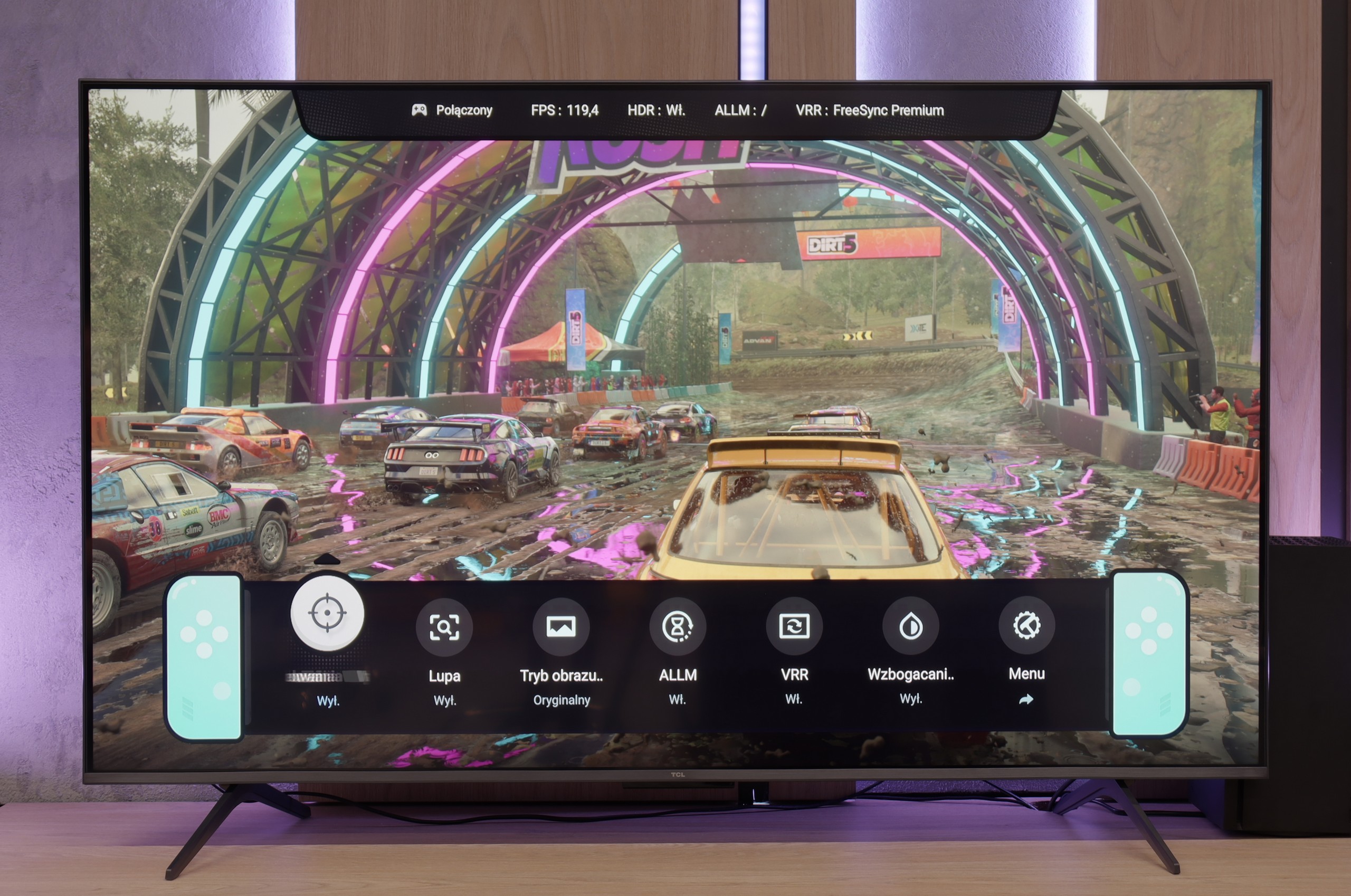
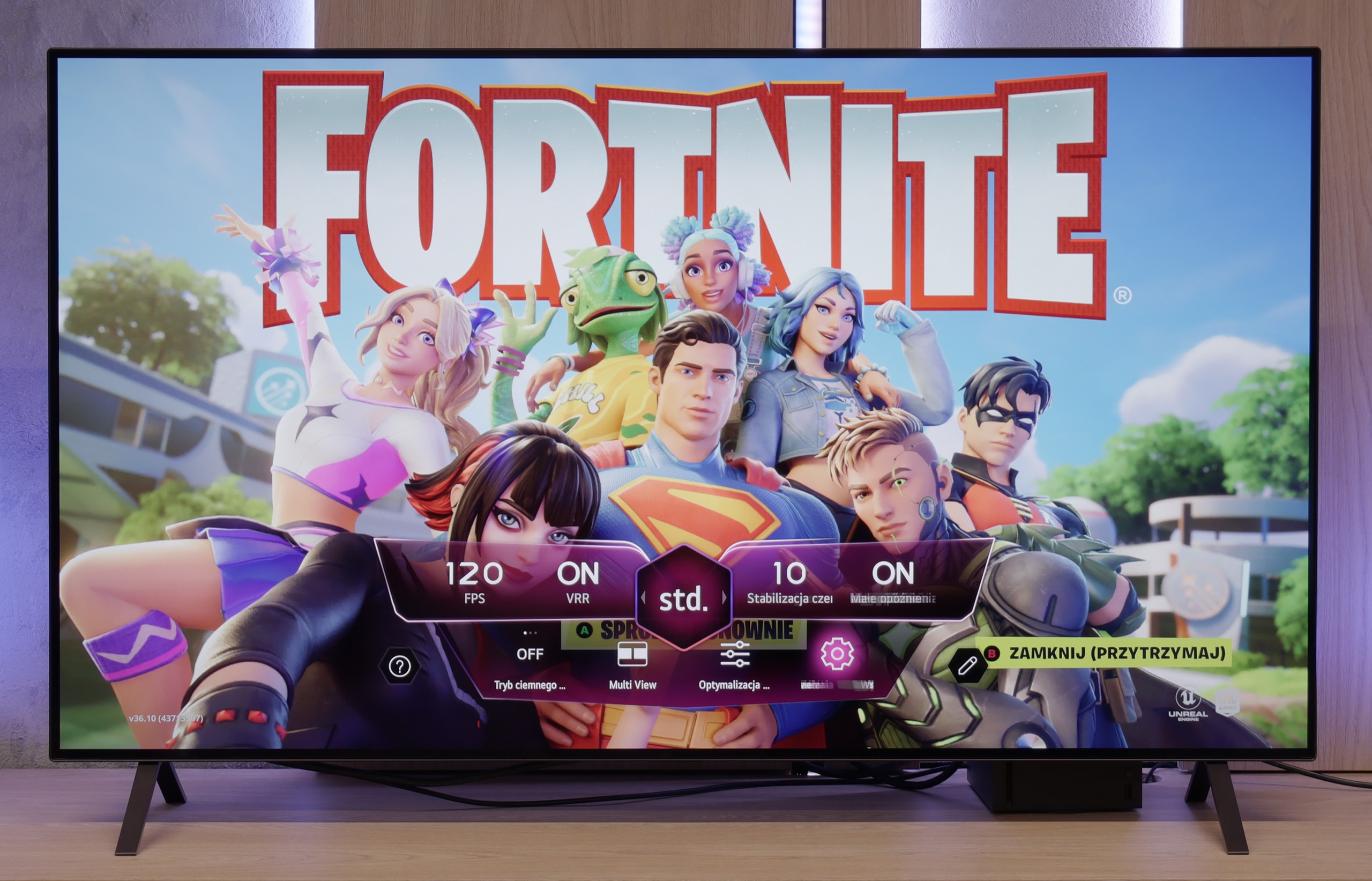
The TCL C6K is a TV that can confidently be called equipment designed for gamers. Here we have 4K at 144 Hz, VRR support, automatic game mode (ALLM), and Dolby Vision Gaming. Additionally, there's a practical Game Bar, a panel with the most important settings readily available – useful when we want to quickly change something during gameplay (e.g., screen aspect ratio: Yes, that’s possible!). The wide VRR range, reaching up to 240 Hz, deserves attention. However, this is mainly an option for PC gamers who drop below the native 4K resolution. Then the TV can spread its wings and show additional smoothness, especially in fast-paced e-sports titles. In the case of consoles, we stick to the classic limit of 120 Hz, but the possibilities are still quite broad. The only drawback is a slight ghosting that can sometimes be seen in dynamic scenes. Other than that, the C6K offers everything gamers expect from a TV.
There are already a few televisions on the market with the label "for gamers" that don’t really understand what that means. The LG B5 is not one of them. Everything here is right – there are four HDMI 2.1 ports, it has 120 Hz, VRR and ALLM, and it also has a Game Bar that is actually useful, not just looks good in the promotional folder. You connect your console – it works. You set 4K at 120 Hz – it works. You have an Xbox and want to play in Dolby Vision – it works too. And not in the sense of "it theoretically supports it," but rather it really turns on, looks good, and you don’t have to fiddle with the settings for half an hour. On top of that, there’s the HGiG picture mode, which LG has implemented correctly – meaning that HDR in games doesn’t turn the screen into a flashlight but shows exactly what it should. There are no surprises here, no strange limitations, no "buts." And you know what? That’s how it should be. Kudos to the LG B5!
Input lag
9.7/10
9.9/10
SDR
HDR
Dolby Vision
In terms of input lag, the TCL C6K performs excellently. With 120 Hz content, the delay is around 10 ms, and at times even less. This is a level at which the response is practically instantaneous, and it's hard to find any objections. For 60 Hz materials, the result is about 18 ms – still a very good result, more than sufficient for comfortable gaming.
Here, we won't elaborate – the LG B5 simply has fantastic input lag. For 60 Hz content, it scores below 10 ms, and for 120 Hz, it even drops to around 5 ms. These are values that you can't honestly complain about. It just works instantly, without delays, without surprises. Well… almost. Because as usual, there's a small asterisk with the Dolby Vision Gaming mode. In this mode, the response time slightly increases. It's nothing dramatic – these are still very low values, rather imperceptible while gaming – but if you're playing exclusively tournament titles and fighting for every millisecond on the XBOX, it's worth keeping in mind.
Compatibility with PC
8.6/10
7.6/10
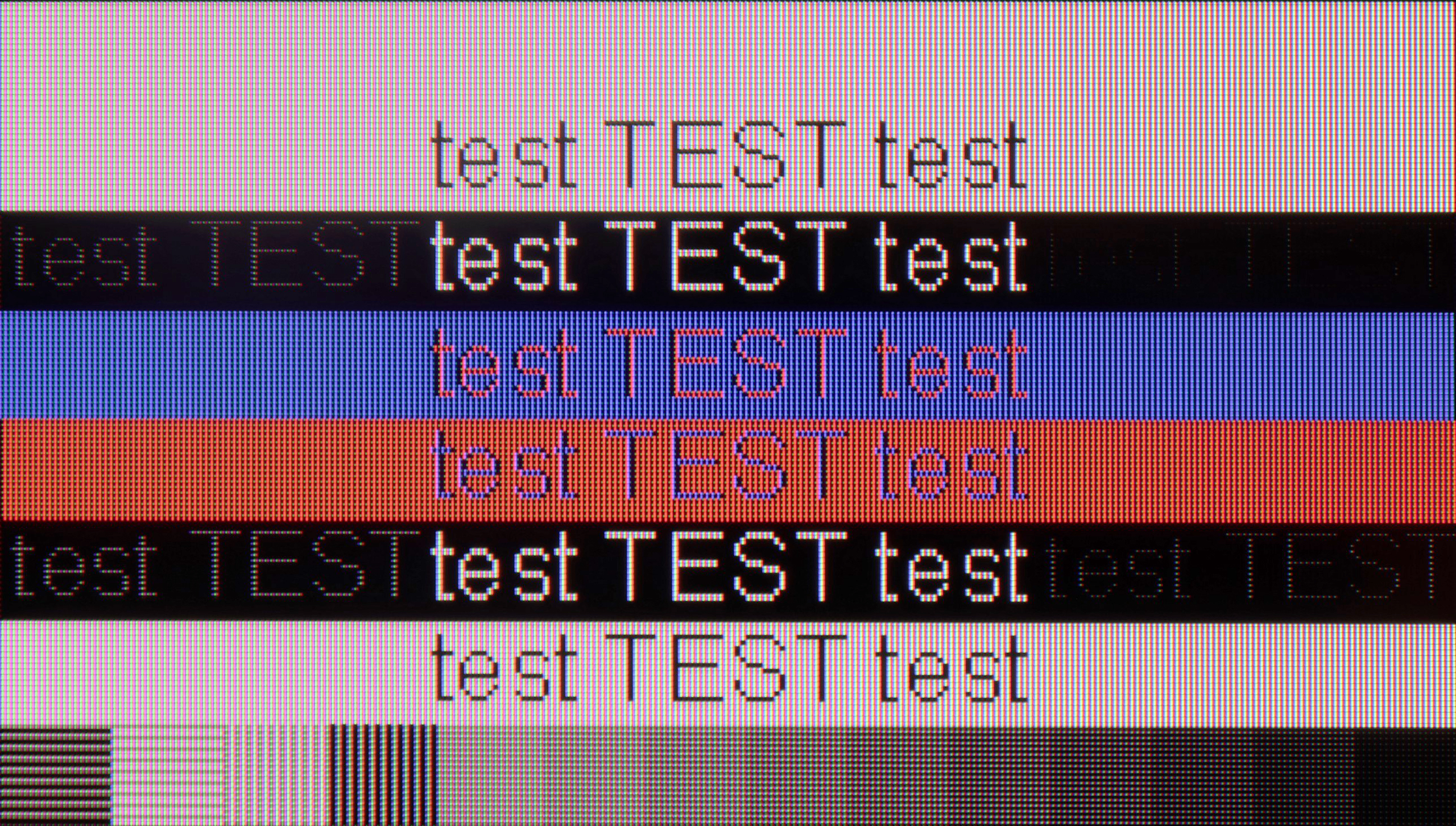
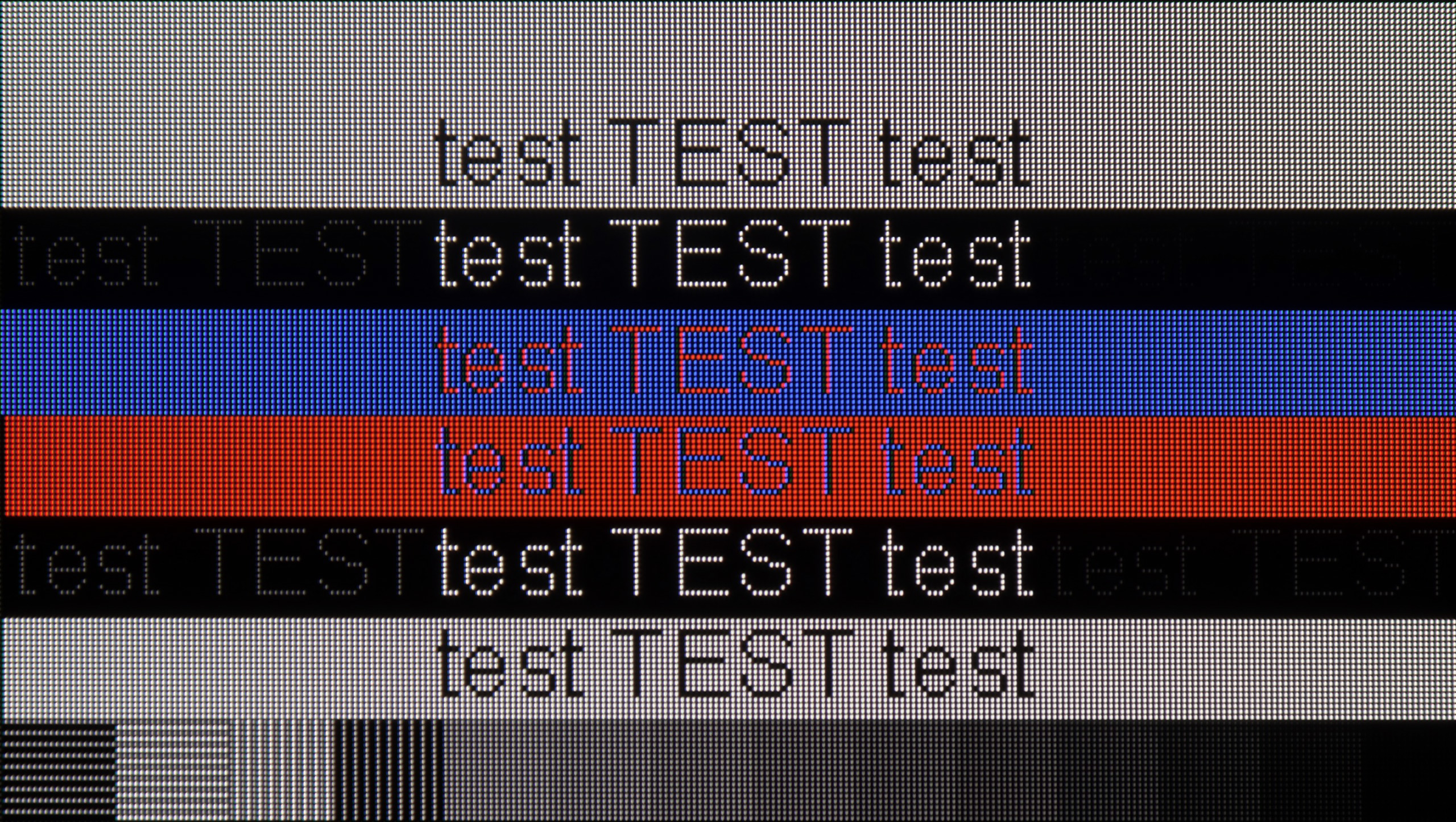
After connecting the TCL C6K to a computer, it performs excellently. At native resolution, we have 4K at 144 Hz, and if we lower the resolution, we can even achieve 240 Hz. Additionally, the television is compatible with Nvidia and AMD graphics cards – supporting both G-Sync and FreeSync. It's also hard to find fault with it for office work. Fonts are sharp and readable thanks to 4:4:4 chroma support, and any minor imperfections are so small that they simply go unnoticed in normal use.
LG B5 is a TV that works great with a computer. You won't find gaming features like 144 or 165 Hz here, but is that really necessary for anyone? With a 120 Hz panel, low input lag, and G-Sync support, it’s truly a very good screen for gaming on PC. No stuttering, no tearing, with lightning-fast response.
But it’s not just for gaming. You can also quite comfortably... simply work on the B5. The TV correctly supports chroma 4:4:4, so fonts are readable, interfaces are clear, and your eyes won’t hurt from blurred letters. This is not obvious, even among more expensive models. However, there is one “but” – and this applies not only to the B5 but to every OLED with a WOLED panel. The RWGB subpixel layout can cause a slight shadow at the edges of fonts. This is not something that stands out from the couch. It’s more likely to be noticed by someone sitting with their nose to the screen and spending half the day in Excel.
Viewing angles
3/10
7.4/10
In the TCL C6K, the viewing angles are typical for a VA matrix. Sitting directly in front, the image looks very good, but any shift to the side results in a noticeable drop in color saturation and brightness. The difference is particularly visible in colorful scenes – the colors become washed out, and the contrast loses its depth. Compared to IPS panels, this is clearly a weaker result, although the trade-off is better black levels and higher native contrast "something for something."
In terms of viewing angles, the LG B5 performs very well – exactly as one would expect from a WOLED panel. No matter from which side you sit, the image retains its quality. The colors do not fade, the contrast does not drop significantly, and the details remain clearly visible. However, it must be honestly added that this is not the level of Samsung Display's QD-OLEDs. They manage to hold color saturation even better at extreme angles. But if you do not plan to watch movies sitting at a 90-degree angle – the B5 is more than sufficient. It’s one of those TVs that simply looks good from every side.
TV efficiency during daytime
6.4/10
4.9/10
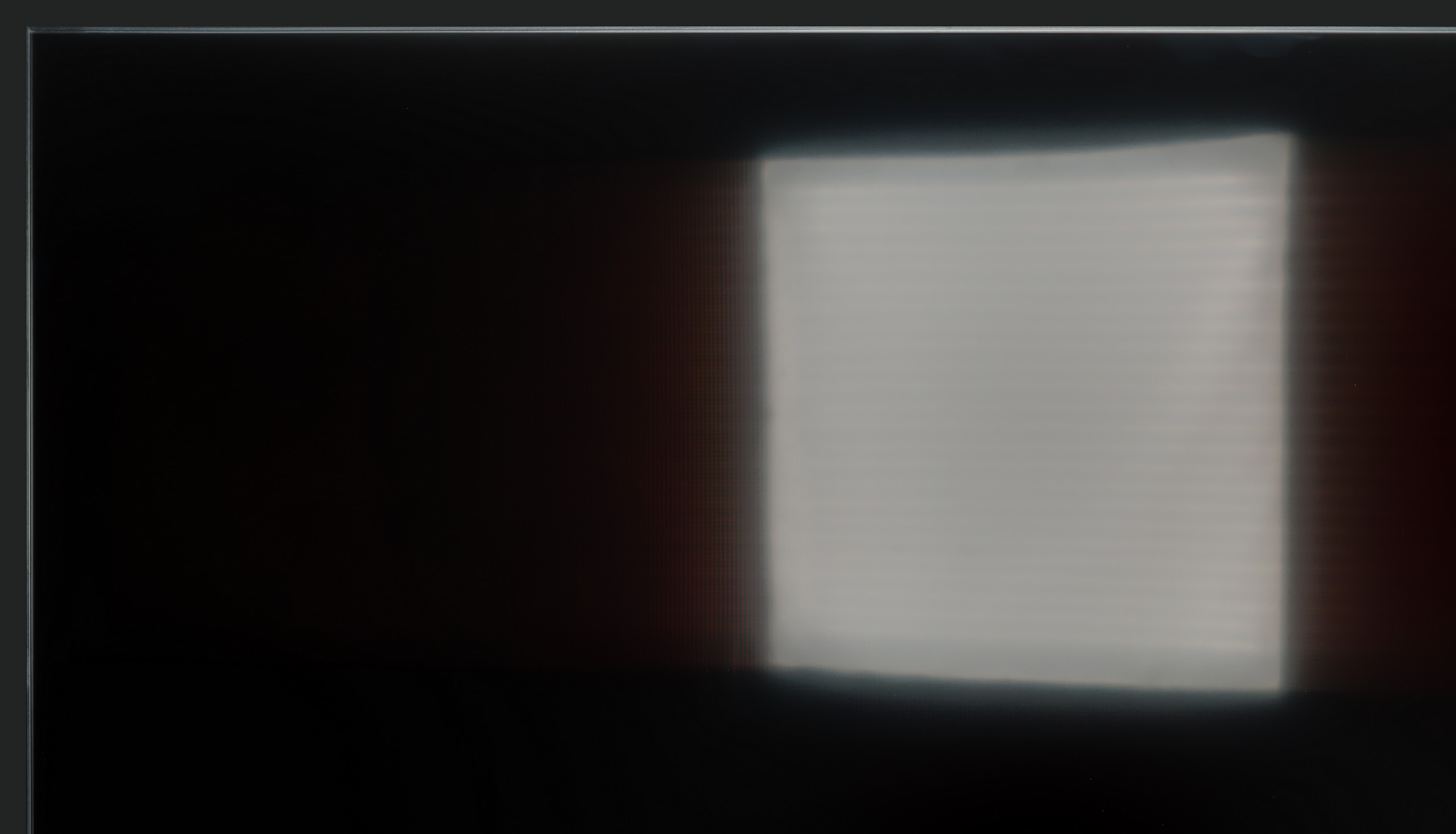
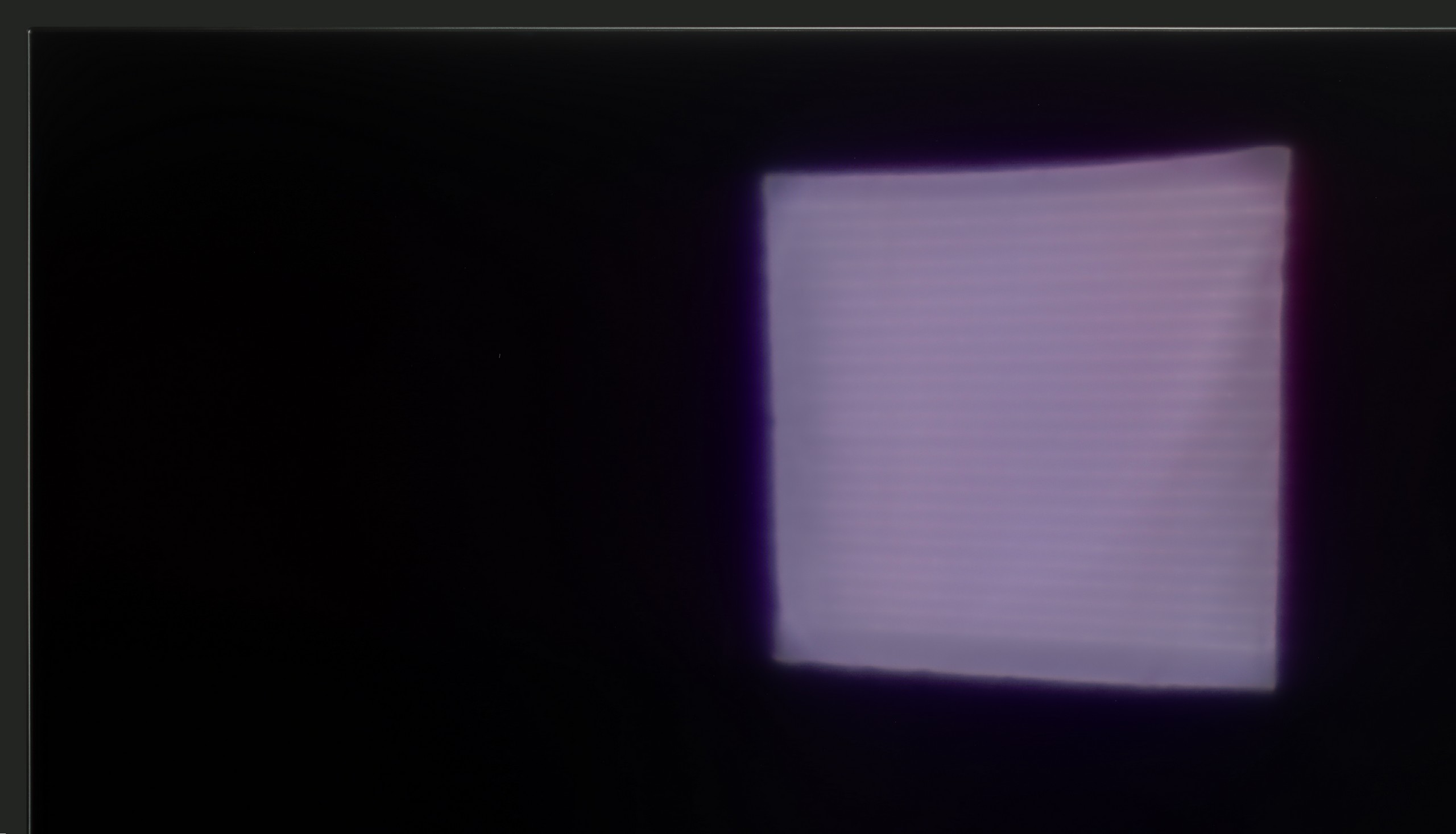


Matrix brightness
Average luminance SDR
LG OLED B5: 279 cd/m2
TCL C6K: 532 cd/m2
TCL C6K performs quite well in bright lighting conditions. The panel offers decent brightness – in SDR content, it reaches around 550 nits, which allows for comfortable television viewing in an average living room, even on days with strong light coming through the windows. This means that daytime viewing does not require complete darkening of the room. It's also worth noting that the screen coating does a good job of reducing reflections, so the television doesn't turn into a "mirror" even in bright light. However, this is not the level of top models with more advanced anti-reflective coatings – in very challenging conditions, such as with large windows, reflections will be noticeable.
LG B5 is a television that performs best after dark. But when sunlight comes in, it becomes a challenge. The brightness of this model is rather average, and the anti-glare layer... is also average. There are no special coatings that deal with reflections or very bright daylight. So if you plan to place this television opposite a large, uncovered window – it might just be hard to see anything.
Fortunately, there is something worth praising: the glossy WOLED panel maintains color saturation well. Even in difficult conditions, the image doesn’t fade or become "washed out," as can happen with some television models. Generally, it is watchable, but if you are looking for a television specifically "for a bright living room," then the B5 shouldn't be your first choice.
Details about the matrix
Subpixel Structure:
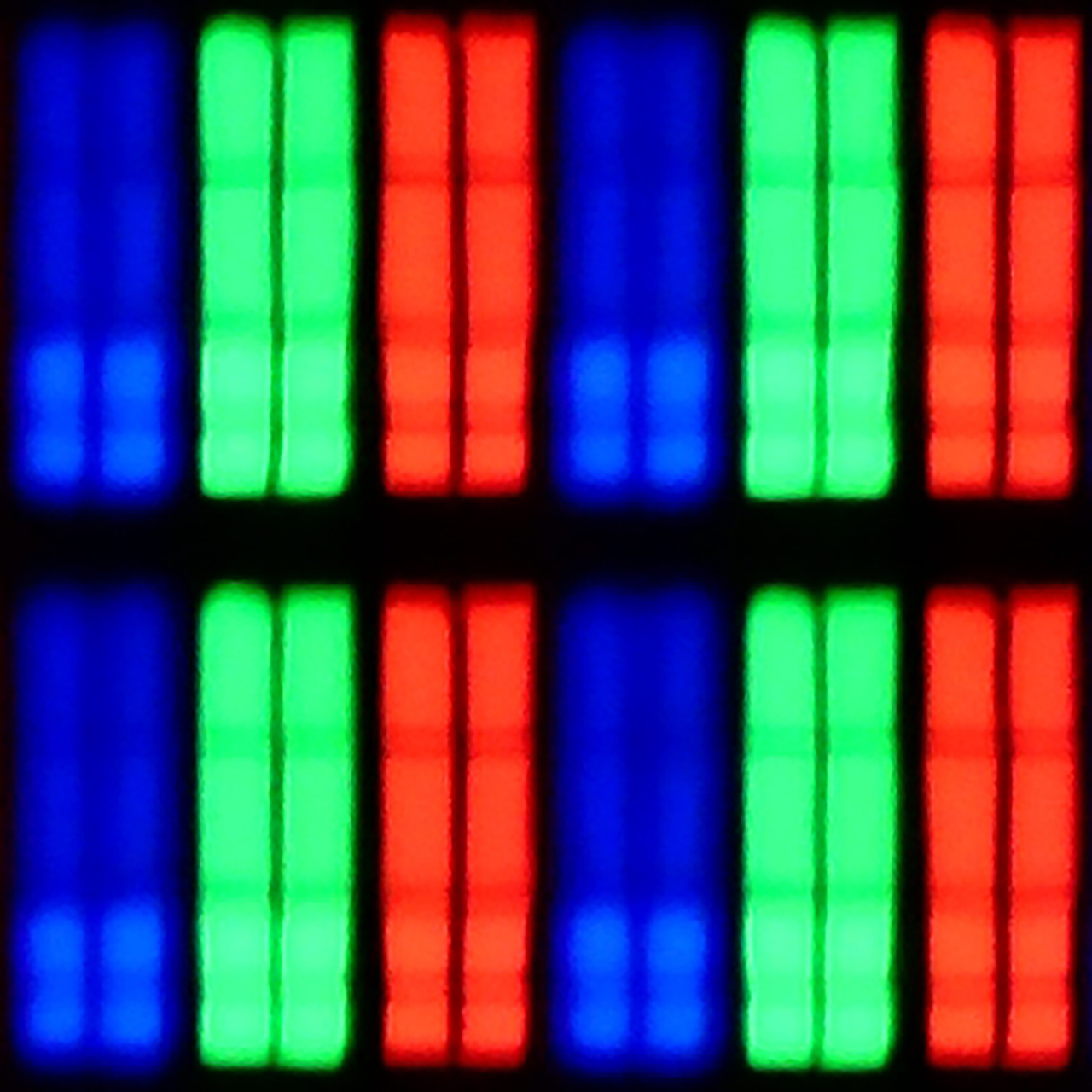
Panel uniformity and thermal imaging:
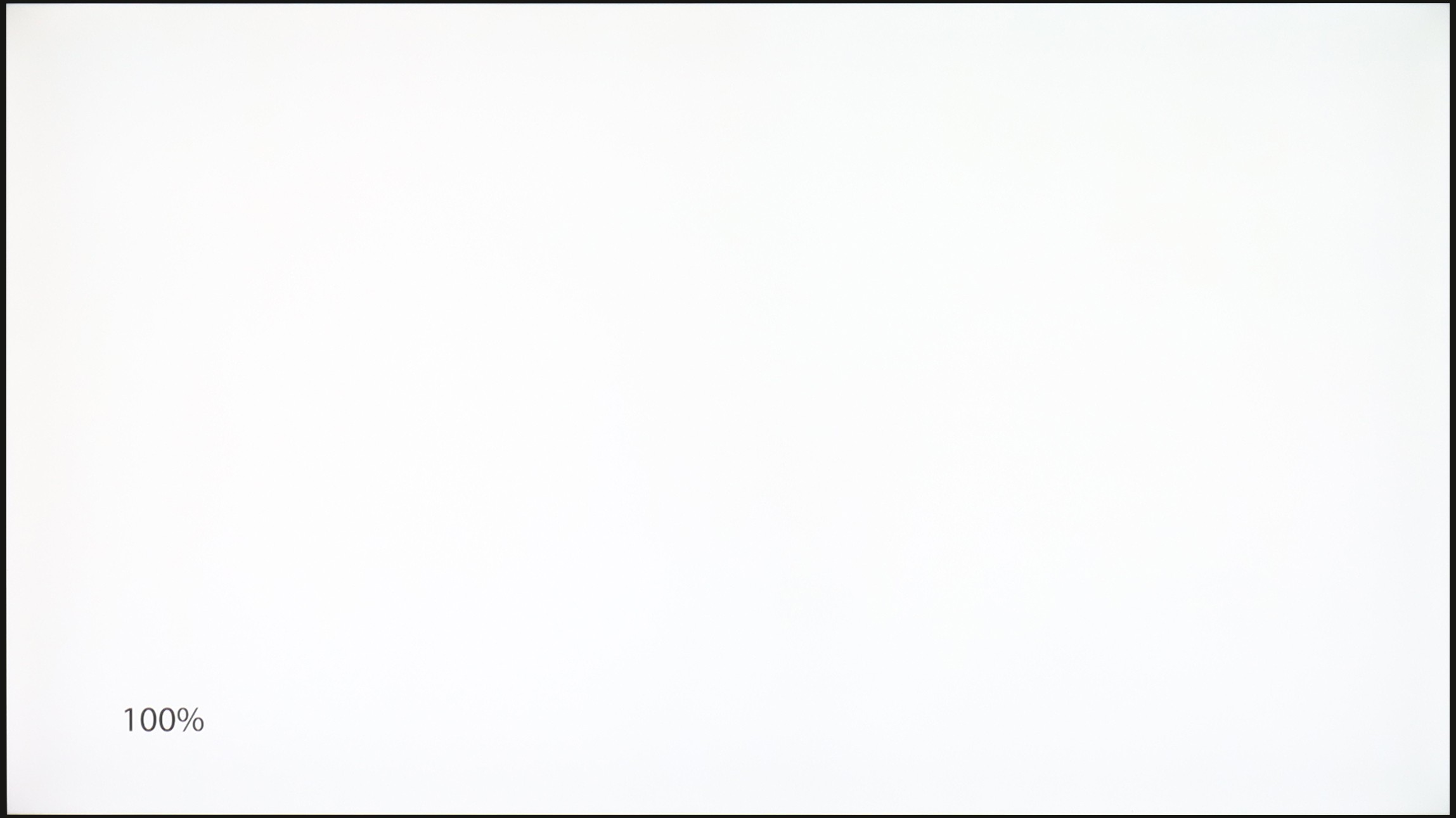
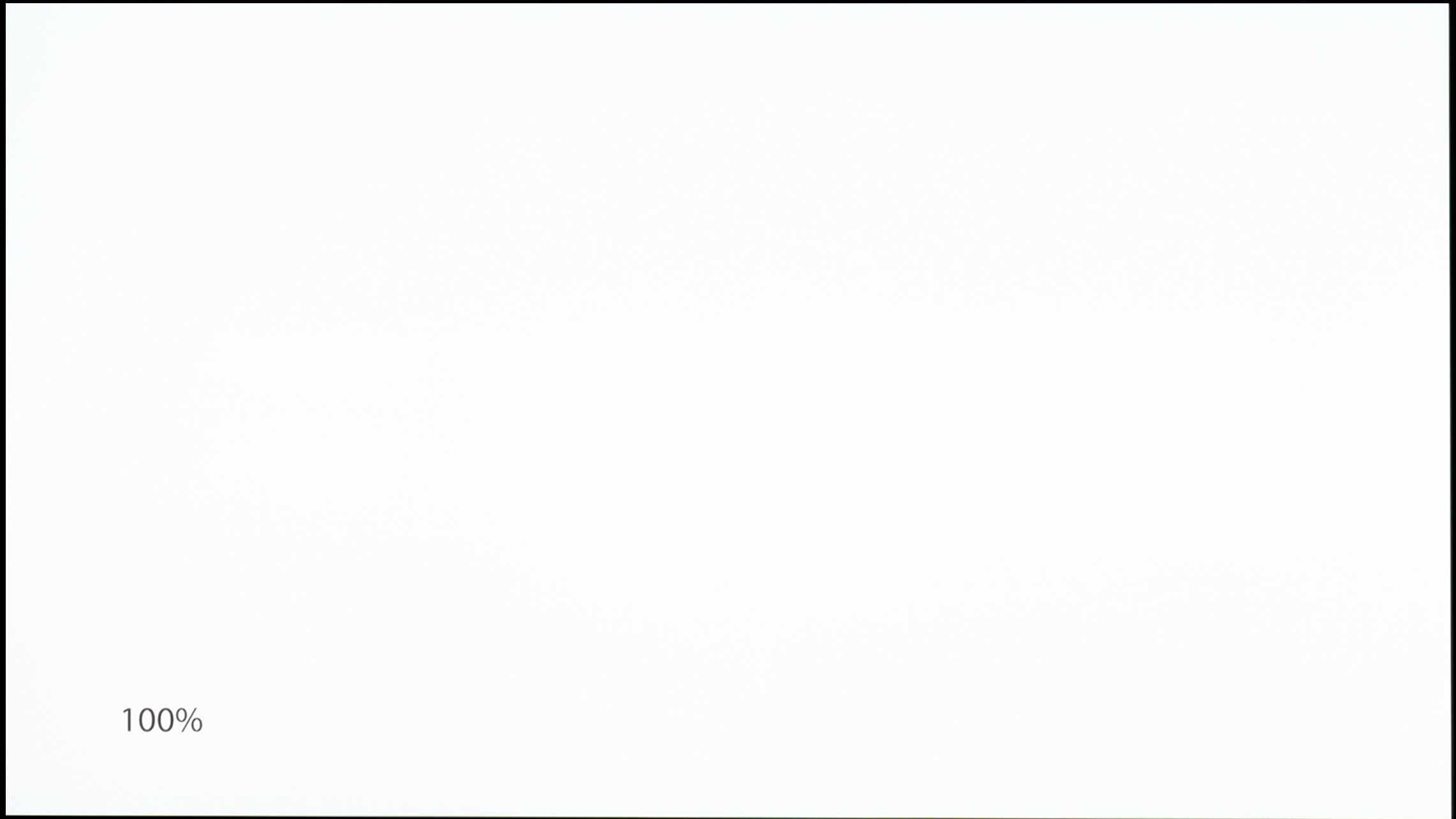
TV features
7/10
7.9/10
- HDMI inputs2 x HDMI 2.0, 2 x HDMI 2.1 48Gbps0 x HDMI 2.0, 4 x HDMI 2.1 48Gbps
- OutputsToslink (Optical audio), eARC (HDMI), ARC (HDMI)Toslink (Optical audio), eARC (HDMI), ARC (HDMI)
- Network InterfacesWi-Fi 2.4GHz, Wi-Fi 5GHz, Ethernet (LAN) 100MbpsWi-Fi 2.4GHz, Wi-Fi 5GHz, Ethernet (LAN) 100Mbps
- TV receptionDVB-T, DVB-T2, DVB-S, DVB-S2, DVB-CDVB-T, DVB-T2, DVB-S, DVB-S2, DVB-C
Classic features:
- Recording to USB (terrestrial TV)
- Recording programming
- Picture in Picture (PiP)
- RF remote control (no need to aim at the screen)
- Backlit remote control
- Teletext
- Audio only mode
- Bluetooth headphones support
- Simultaneous Bluetooth headphones & TV audio
Smart features:
- AirPlay
- Screen mirroring (Windows Miracast)
- Voice search
- Voice search in native language
- Ability to connect a keyboard and mouse
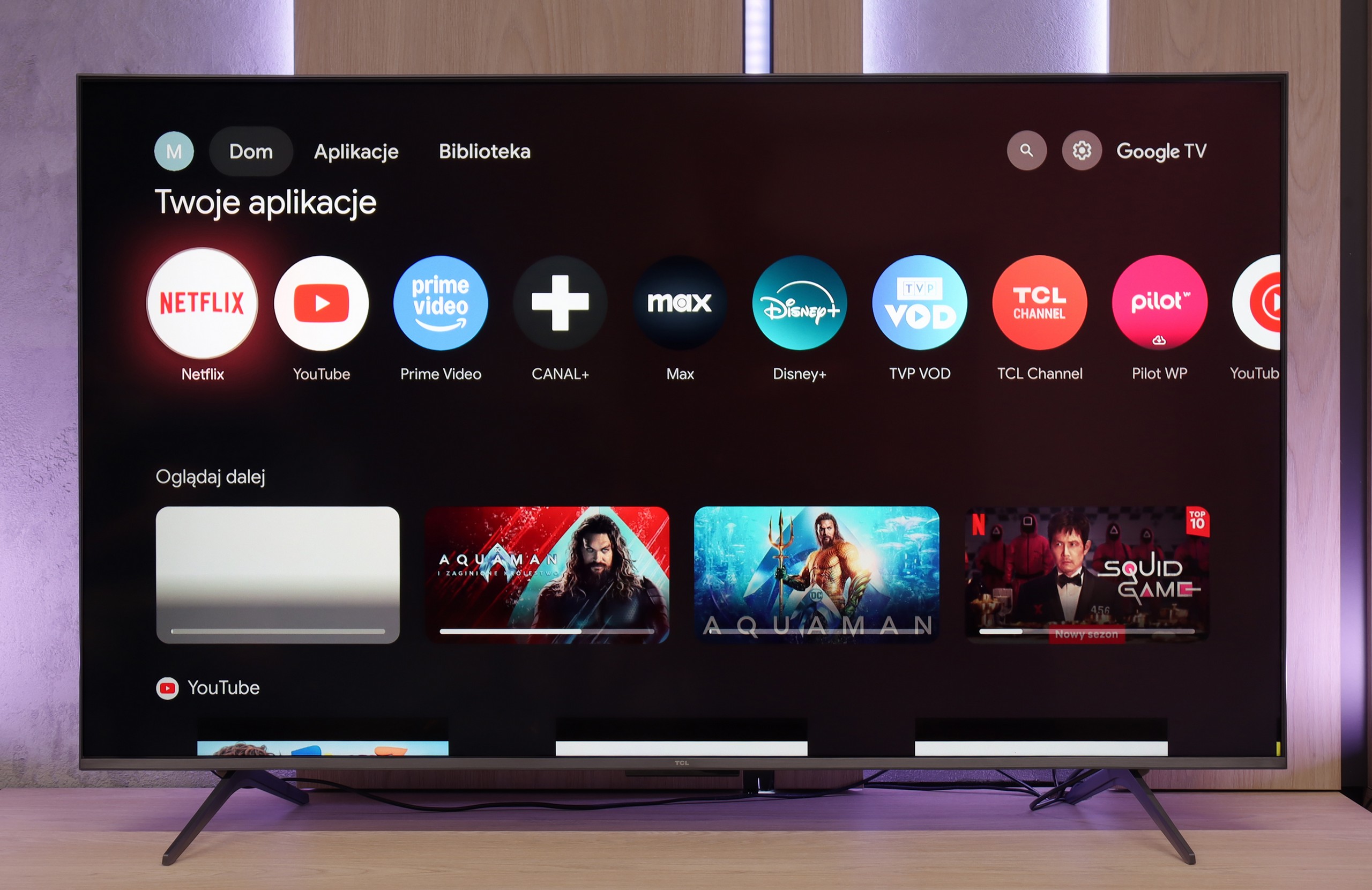
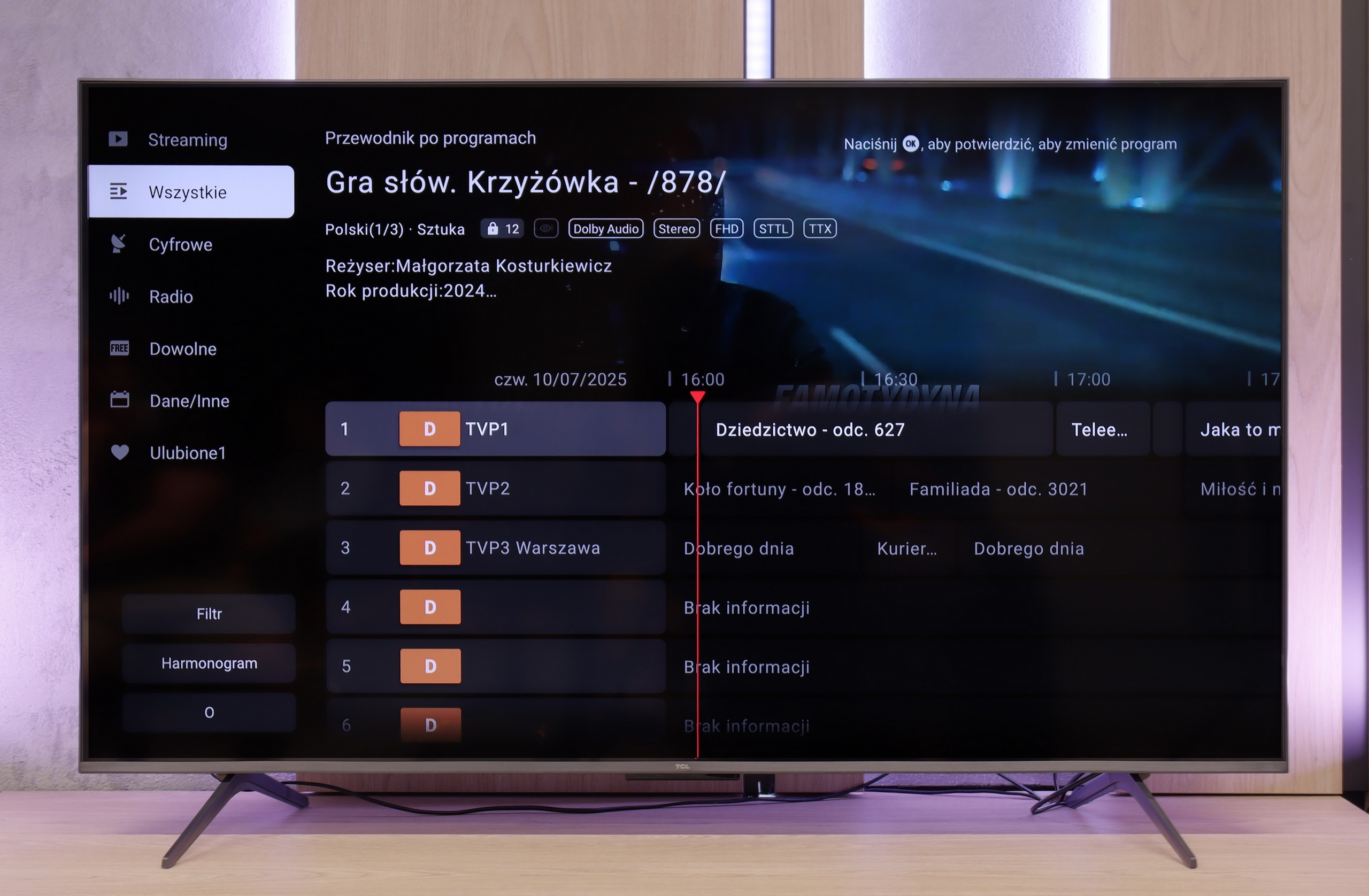
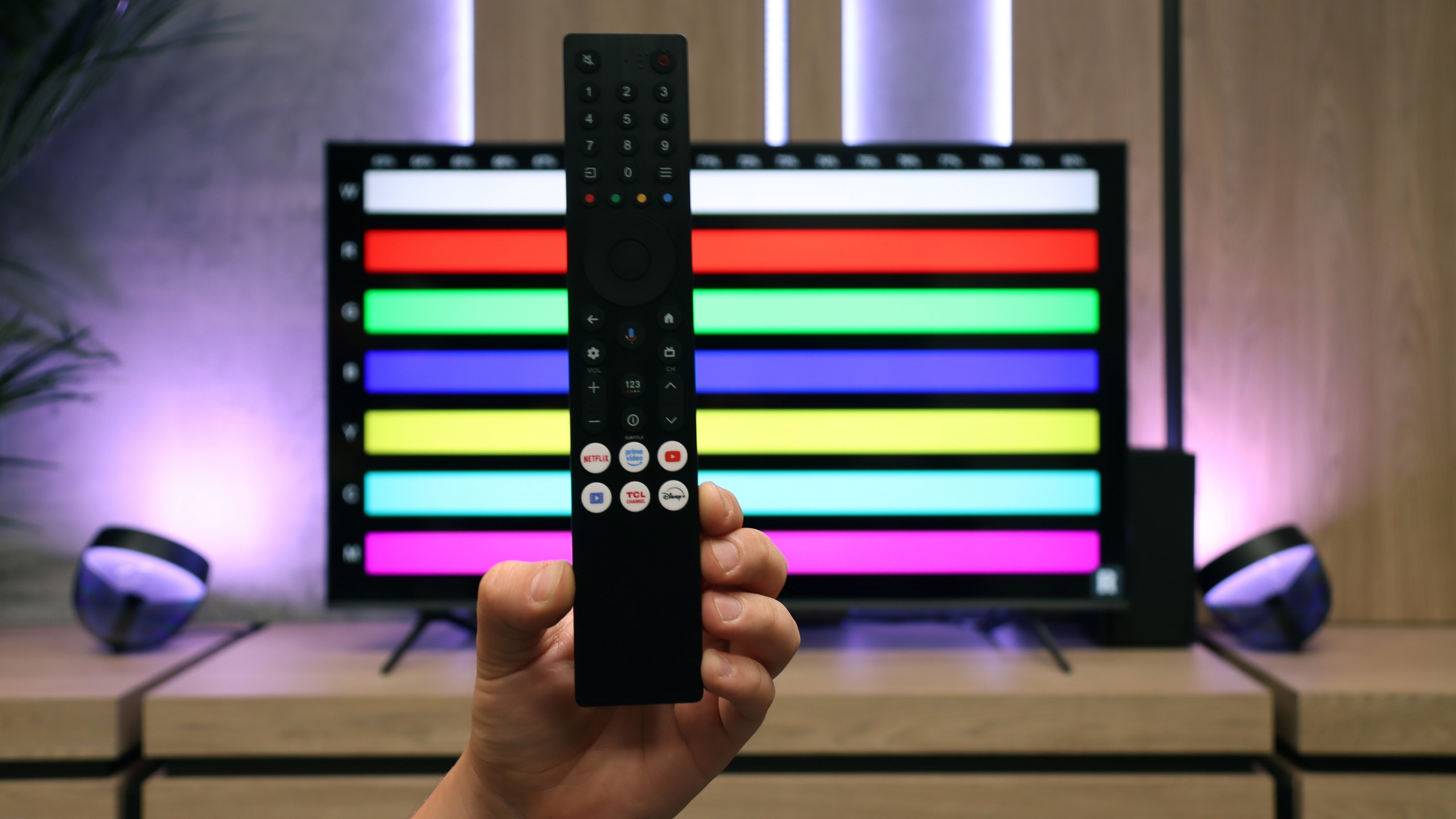
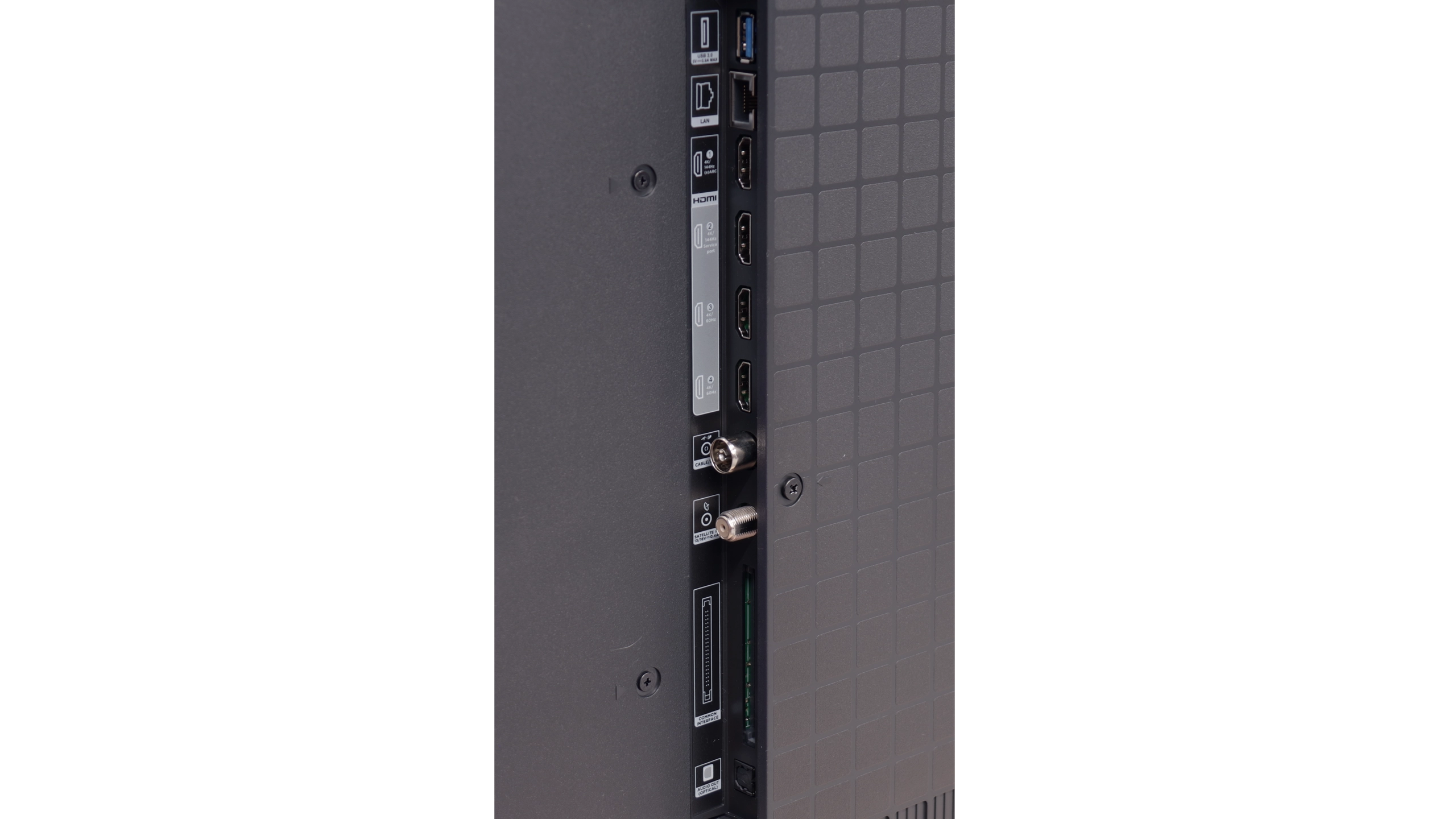
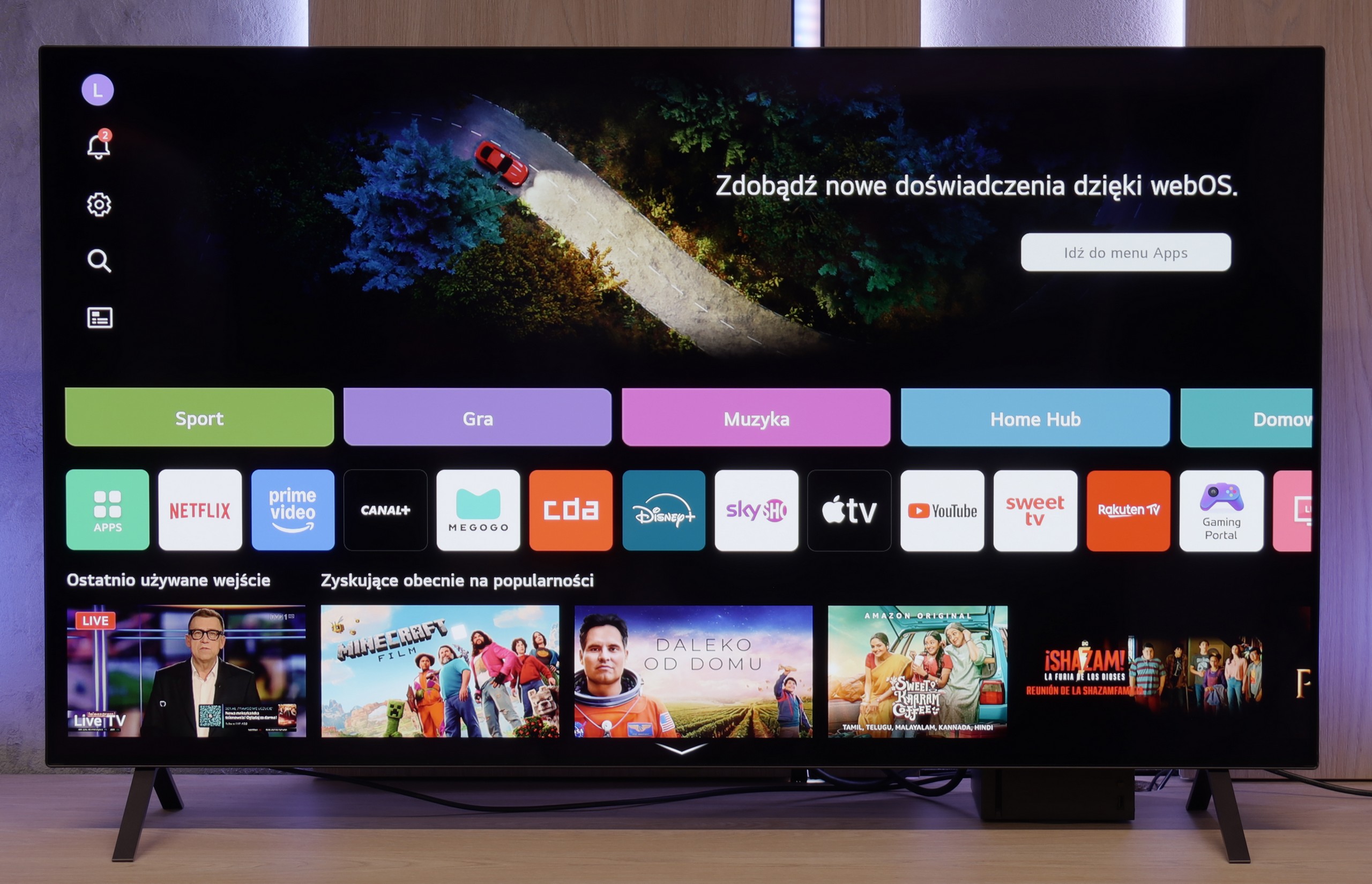
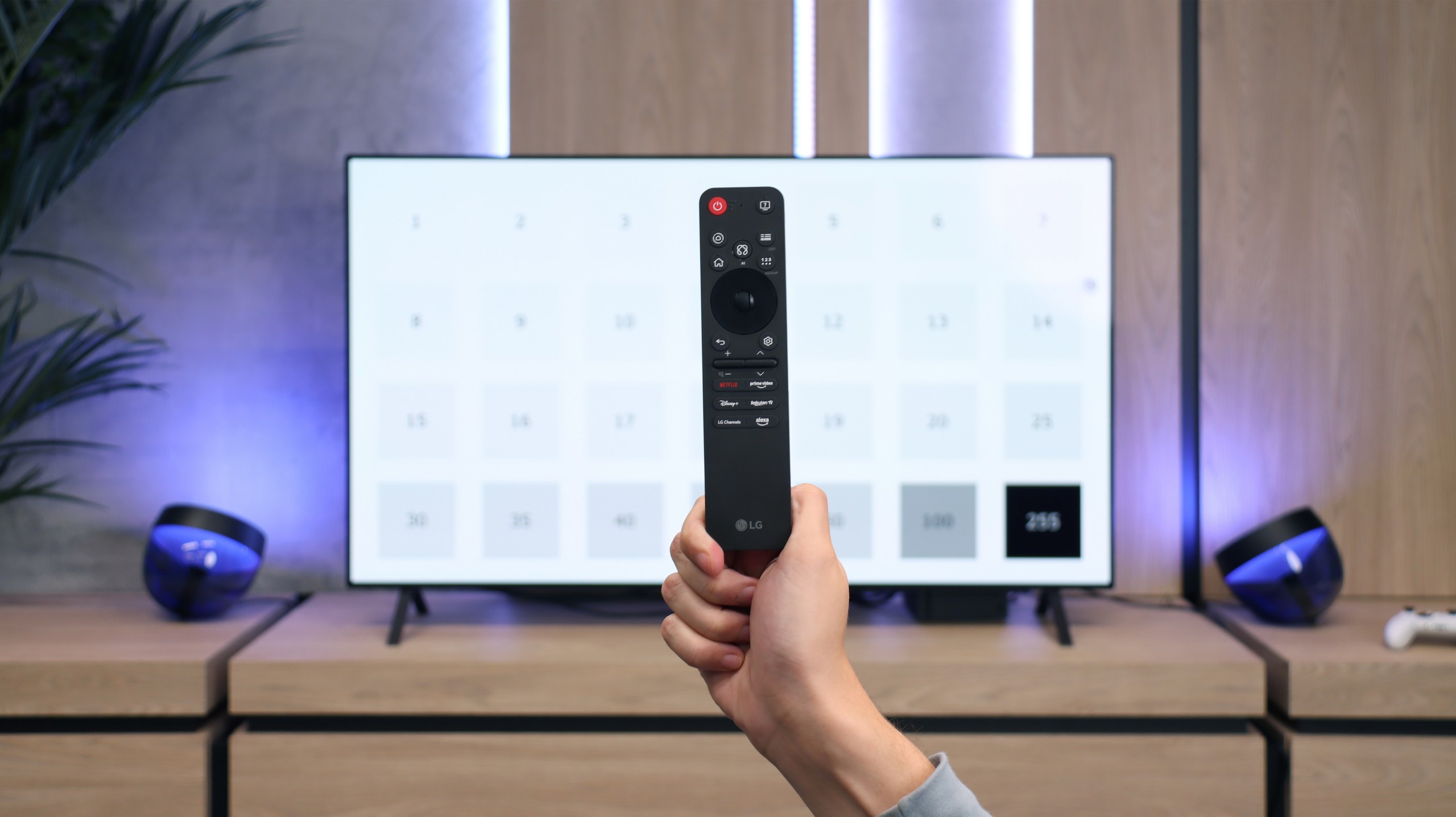
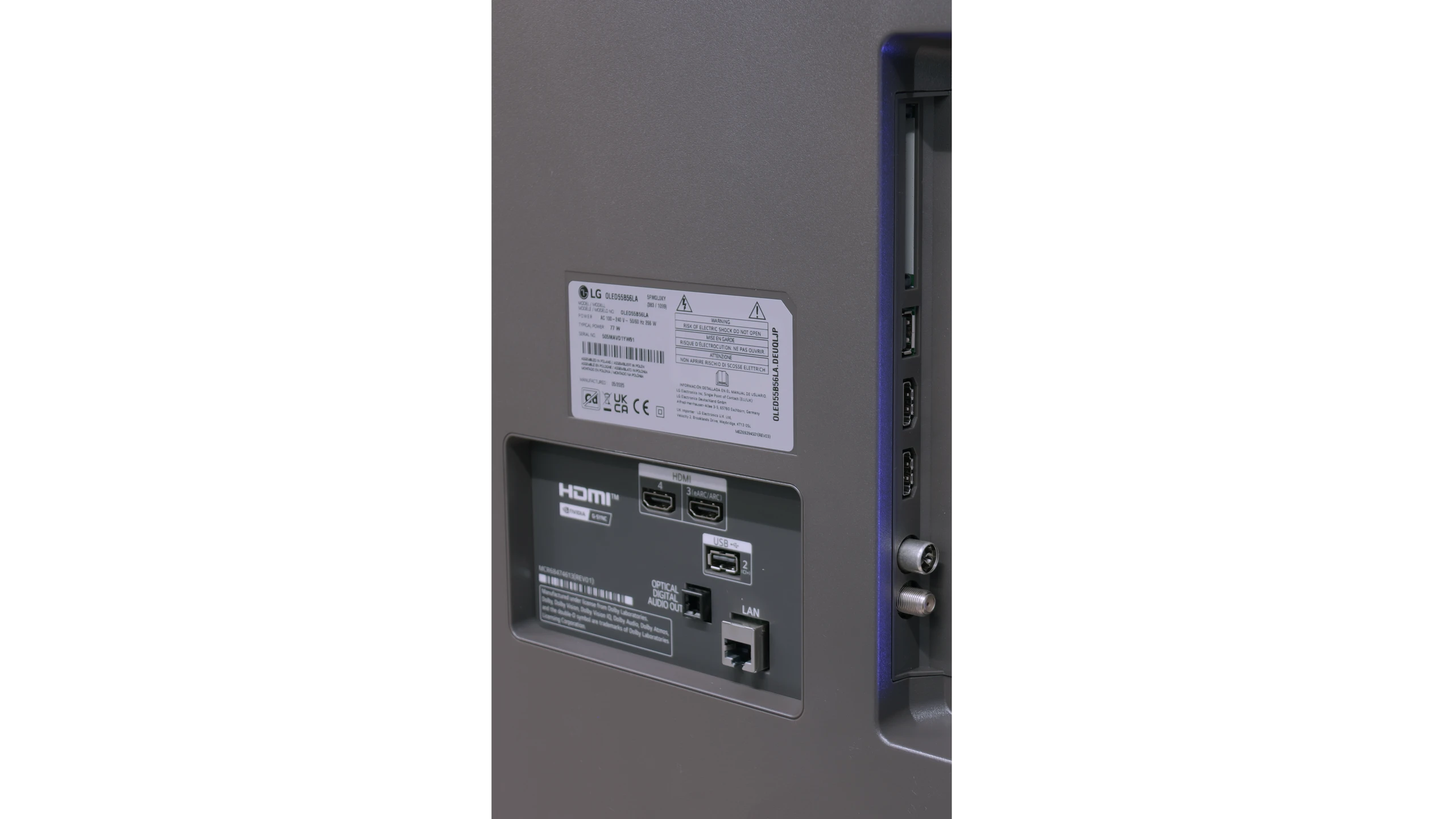
Multimedia Features: Google TV
The strongest user aspect of the TCL C6K is undoubtedly the Google TV system. It gives the television character and provides it with an edge over many competitors. We have a full suite of services here – from support for popular streaming applications, to screen mirroring, all the way to AirPlay, which also makes iPhone users feel at home. In addition, there is Google Assistant (recently in the Gemini AI version), which not only answers questions but also performs simple commands efficiently, e.g., changing channels or searching for content on VOD services. The system itself works quite responsively, although it must be noted that there is a certain drawback – the awkward translations in the Polish menu can evoke a smile, but sometimes require a moment of thought to decipher what is really meant.
Classic Features
When it comes to classic television features, the TCL C6K is rather average. There is no USB recording or PiP mode, which may be disappointing for some. However, the manufacturer did not forget the basics – teletext TV and a clear EPG are available, which still matter to some users. In everyday use, the support for external audio devices via Bluetooth also comes in handy – a simple way to connect a speaker or headphones, which can be a practical solution for seniors. Beyond that, it is difficult to find elements that would distinguish the C6K from its competitors – it is simply a solid, but standard package of basic functions.
User Features
Although the LG B5 is modern equipment, they haven't forgotten about those who just want to… watch television sometimes. Without apps, without accounts, without logging in anywhere. We have built-in DVB-T2 tuners and the ability to record to USB, with a clear and fast EPG guide. Not enough? There’s even a functioning teletext – a relic for many, perhaps, but everyday life for others. We also appreciate the option to turn off the picture and leave just the sound, which works great for listening to music. And if you want to watch quietly – you can easily pair Bluetooth headphones, without struggling with settings and without delays. Everything works as it should.
SMART TV: webOS
The biggest distinguishing feature of the webOS system – still! – remains the way of control. The Magic remote that comes with the LG B5 (in our version B56 – the one without a numeric keypad) works like a magic wand. We point, click, select. And it just… works. Intuitively, quickly, and without unnecessary left-right arrow clicking. Additionally, there’s an AI voice assistant – quite capable. You can call it directly from the remote and use your voice to search content, change settings, or switch sources. While webOS itself may not be the most "modern" system on the market, and the built-in ads can be annoying, when it comes to user convenience – especially with the Magic remote – it still keeps a step ahead of the competition.
Playing files from USB
8.9/10
8.6/10
Supported photo formats:
Maximum photo resolution:
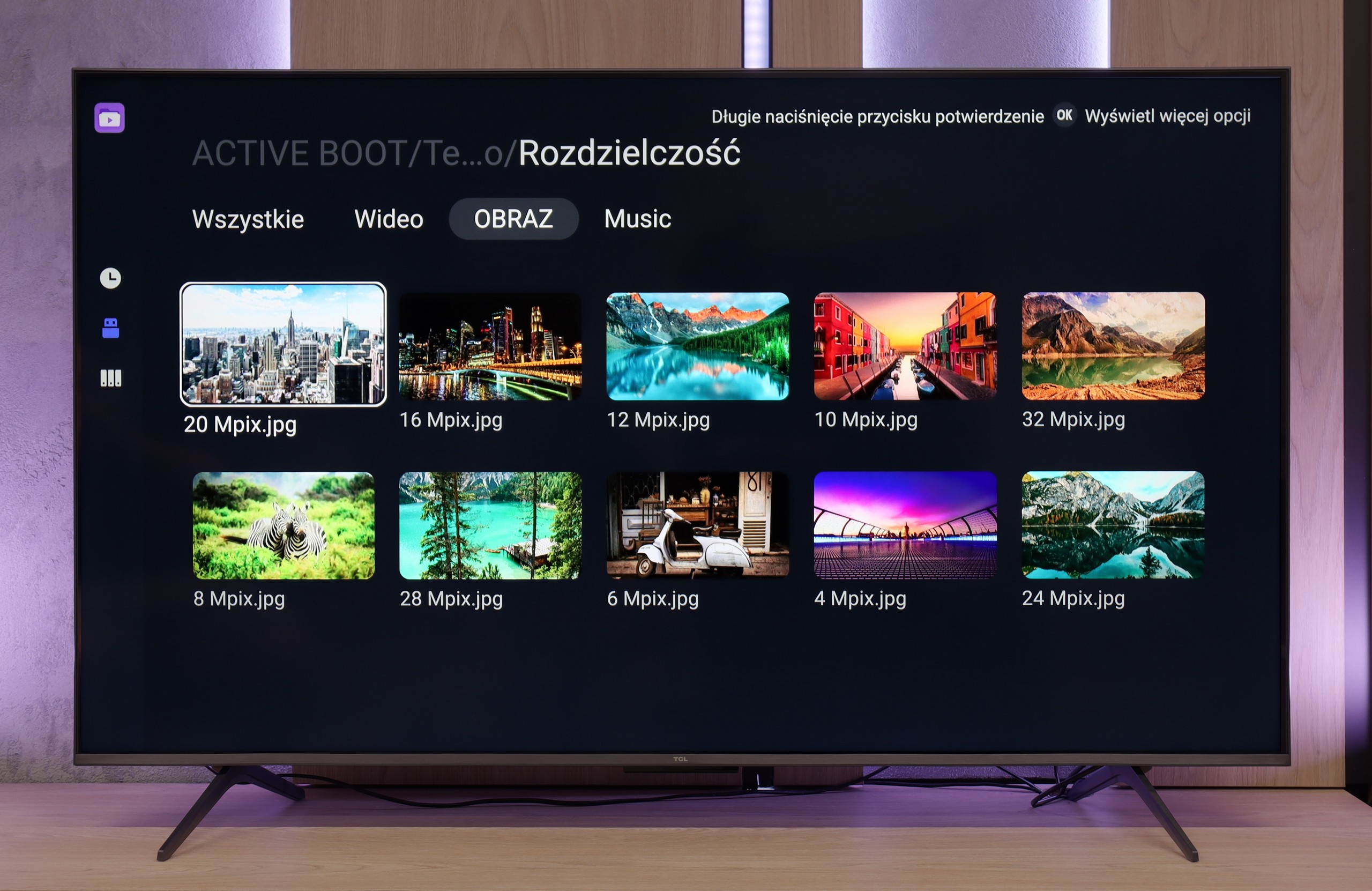
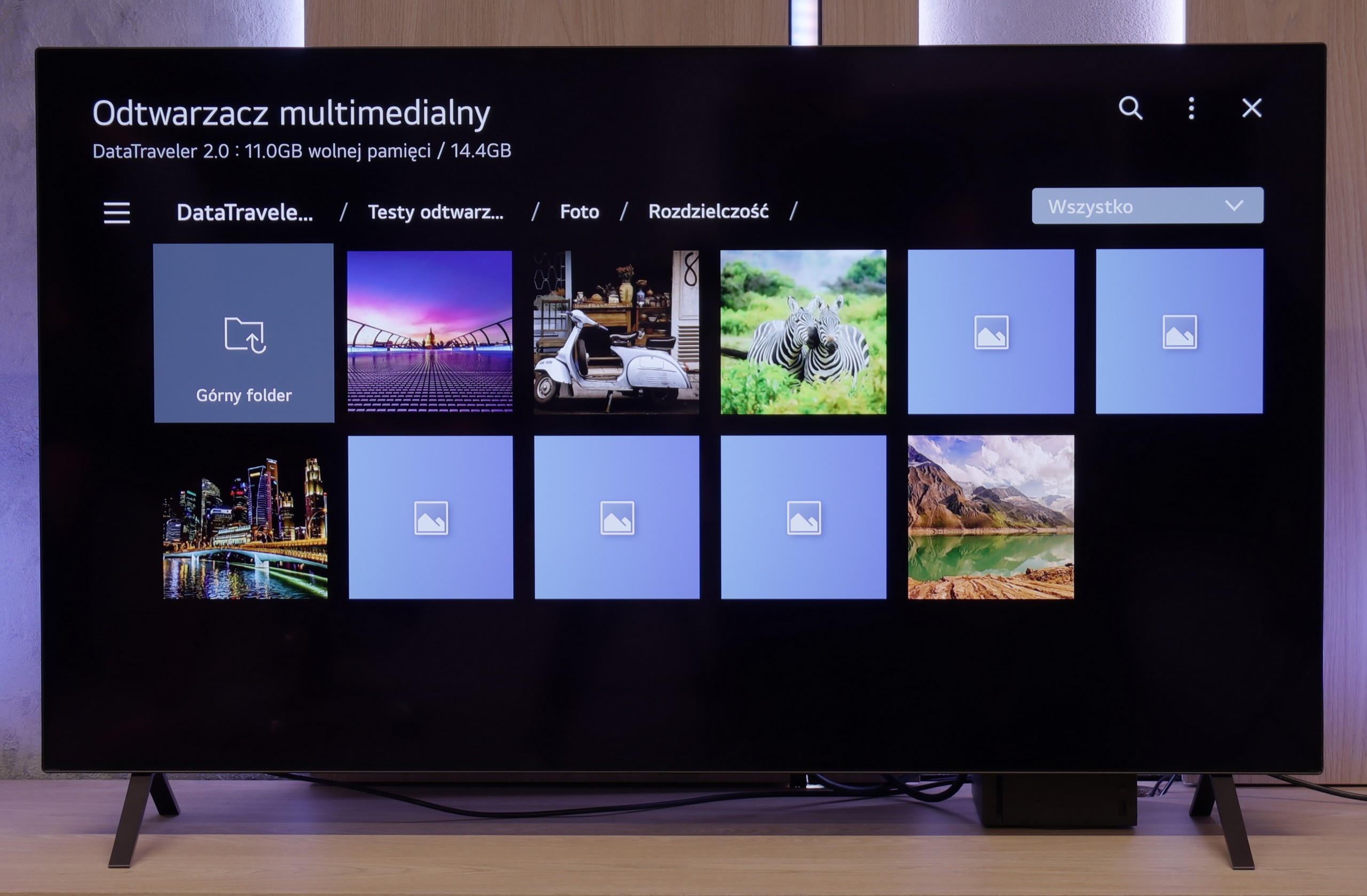
The built-in media player in the TCL C6K performs really well – practically all popular file formats work without major issues. There are, of course, minor exceptions, especially with less common codecs or atypical video file configurations, but in everyday use, this is rarely noticeable. The biggest advantage, however, is that the TV runs on Google TV, which provides full freedom in choosing additional software. If someone encounters a file that the standard player cannot handle, it is enough to install an alternative – such as VLC – and the problem disappears.
LG B5 handles files from USB as it should. Most popular formats work seamlessly, and subtitles – even with Polish characters – are displayed correctly. You can easily play a movie from a flash drive or do a weekend slideshow of your vacation photos without worrying that something will go wrong. However, there was a surprise with files in HEIC format – that is, photos saved by Apple devices. While LG C5 had no issues with them, the B5 stubbornly refused to cooperate and was unable to display them. A minor glitch that probably won’t affect everyone, but it's worth knowing about.
Apps
9.6/10
9.1/10














































Sound
6.5/10
7/10
- Maximum volume-85dB
- Dolby Digital Plus 7.1
- Dolby True HD 7.1
- Dolby Atmos in Dolby Digital Plus (JOC)
- Dolby Atmos in Dolby True HD
- DTS:X in DTS-HD MA
- DTS-HD Master Audio
In terms of audio, the TCL C6K performs quite well. The manufacturer has been boasting about its collaboration with the Onkyo brand for several years, and it indeed reflects in the sound quality. The audio is pleasant, with clear mids and quite a clean high end, and the whole sound gives the impression of being well balanced. Of course, this will not replace a full-fledged soundbar, especially in terms of bass depth, but for built-in speakers in a TV from this price segment – it's really very good.
We didn't expect miracles – after all, the LG B5 doesn't have an advanced audio system, and its built-in speakers look... well, like those in most flat-screen TVs. And yet – it sounds quite pleasant. Dialogs are clear, the sound doesn't boom, and during a quieter viewing experience, we didn't immediately feel the need to connect a soundbar. It's just a pity that this year LG decided to cut something that worked in the previous generation. We're talking, of course, about support for DTS formats, which we won't find in the B5. If you have movies encoded in that standard – you'll need to rely on an external player.
Acoustic Measurements
No acoustic data
85dBC (Max)
75dBC
